Video Gamer is reader-supported. When you buy through links on our site, we may earn an affiliate commission. Prices subject to change. Learn more
Though Manor Lords weaves in some real-time strategy elements, it’s chiefly a city-builder, which means the buildings at your disposal play a crucial role in graduating from a cluster of tents to town supported by a robust production chain. Much of your success in Manor Lords relies on understanding and knowing how each of them contribute to your feudal settlement.
First time players are likely to feel a little overwhelmed by all the building options given there are so many, even in Manor Lords Early Access release. We’ll walk you through all the Manor Lords buildings, including what they do and how they work.
Gathering buildings
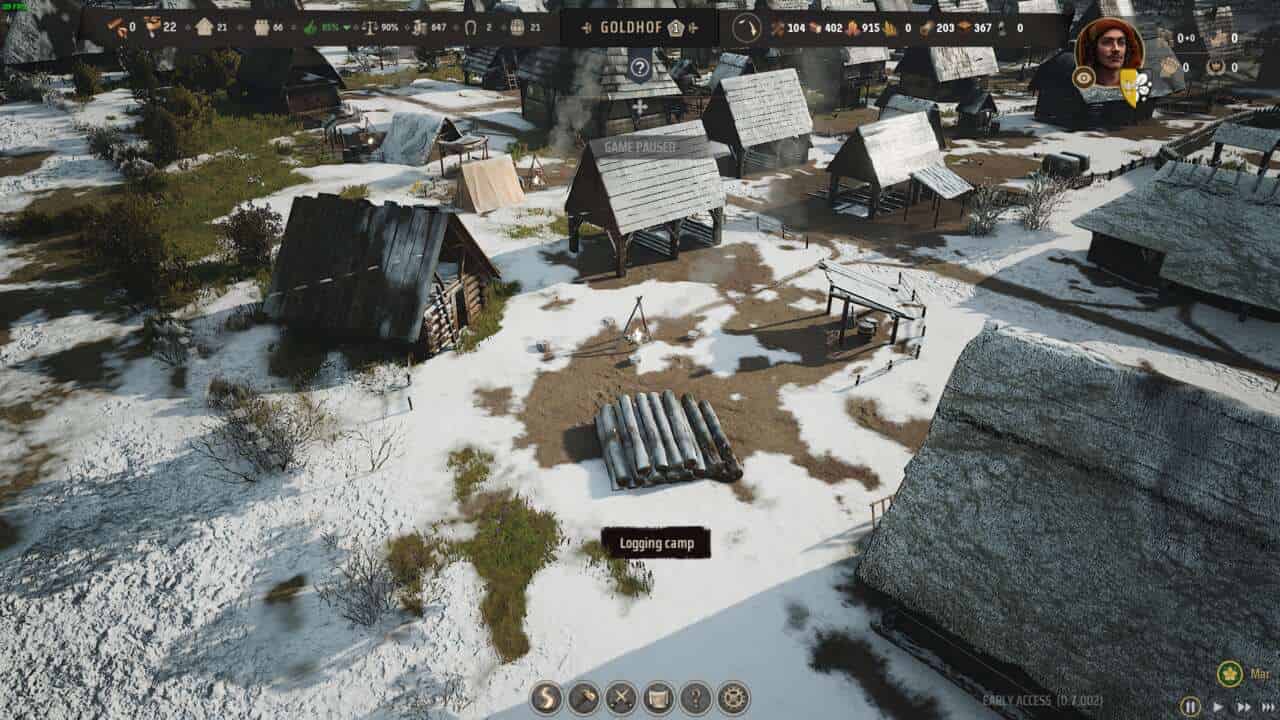
Logging Camp
- Settlement Level availability – Settler’s Camp
- Construction menu section – Gathering
- Relocation – free
- Upgrades – none
The Logging Camp is your source of Timber, which is used for construction but also to produce Planks at a Sawpit. Note that it doesn’t gather Firewood, which is exclusively gathered by the Woodcutter’s Lodge. We recommend placing a Logging Camp near a forest to reduce transport times. Logging Camp will eventually deplete forests so it’s worth building a Forester’s Hut as well to replant trees.
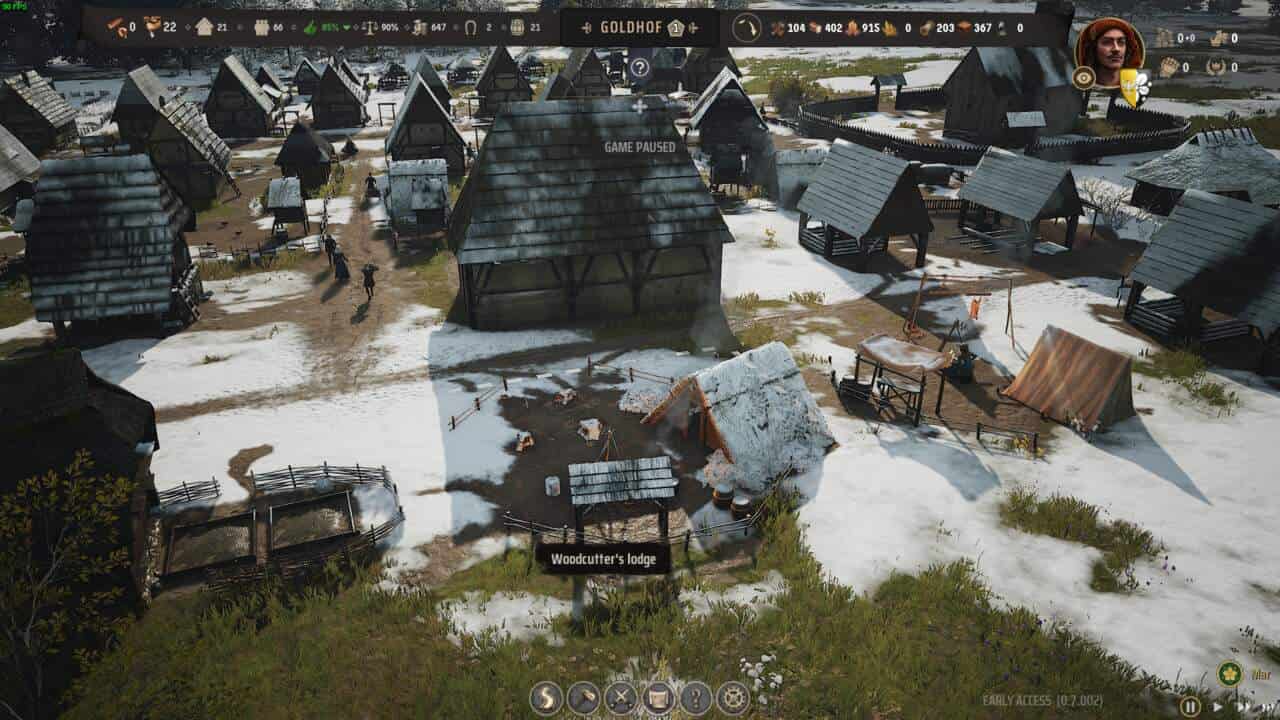
Woodcutter’s Lodge
- Settlement Level availability – Settler’s Camp
- Construction menu section – Gathering
- Relocation – free
- Upgrades – none
The Woodcutter’s Lodge is a vital building as it’s responsible for gathering Firewood, your main source of fuel to keep your villagers nice and toasty in their burgage plots. It’s one of the first Manor Lords buildings you’ll want to construct and much like the Logging Camp, in proximity to a forest is the way to go. Pair it with a Forester’s Hut to mitigate deforestation.
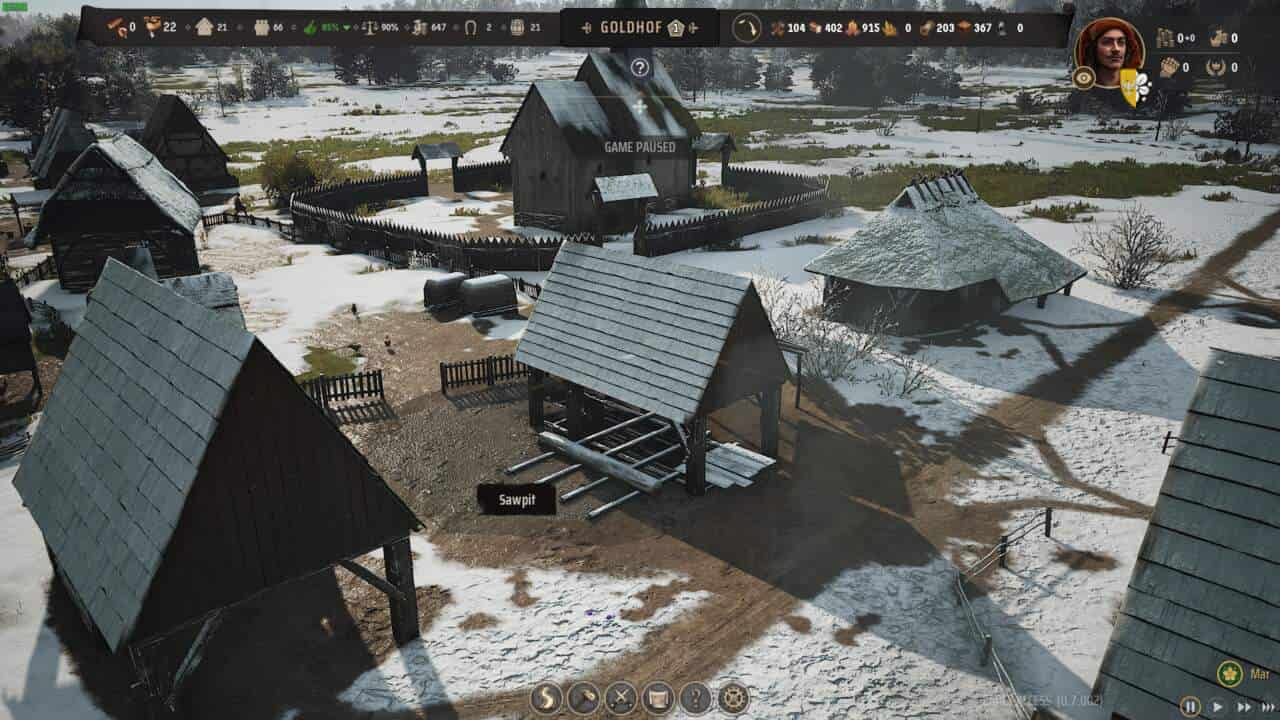
Sawpit
- Settlement Level availability – Settler’s Camp
- Construction menu section – Gathering
- Relocation – free
- Upgrades – none
The Sawpit is responsible for converting Timber gathered by a Logging Camp into Planks, which are then used for Construction and upgrades such as levelling up burgage plots. We recommend building a Sawpit near a Logging Camp and Storehouse for efficiency as it will cut down on transportation and speed up productivity.
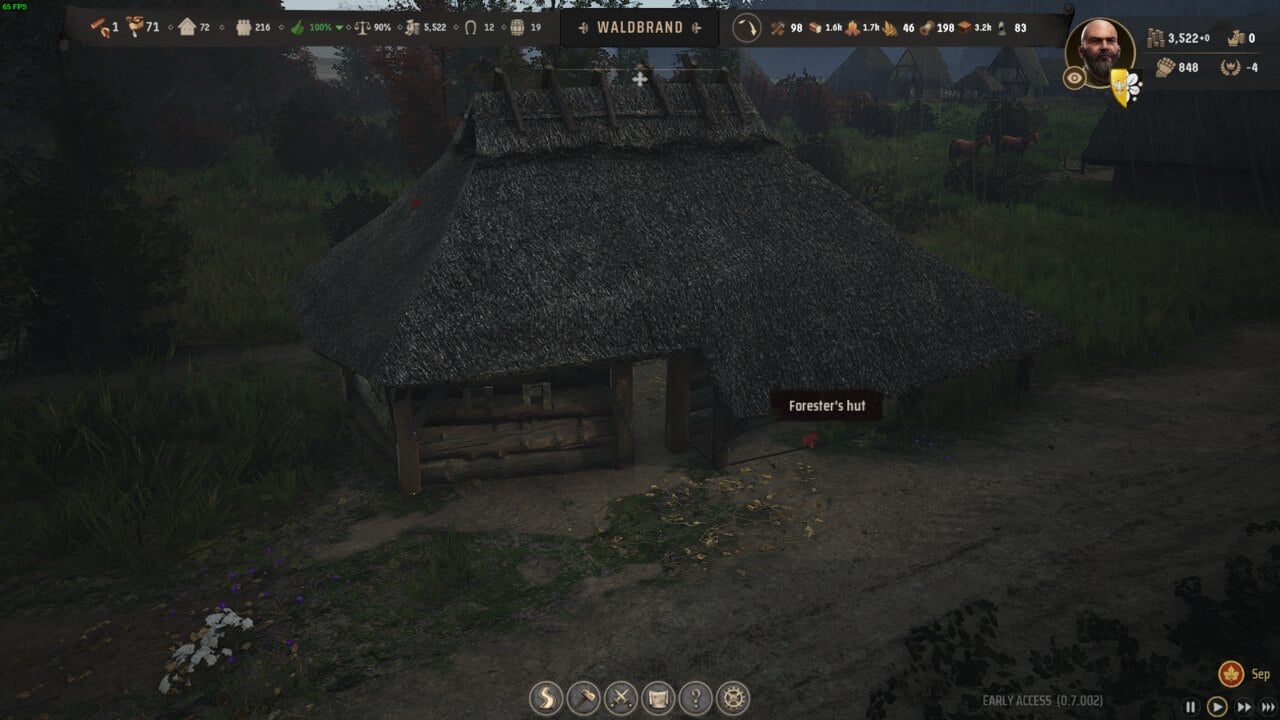
Forester’s Hut
- Settlement Level availability – Settler’s Camp
- Construction menu section – Gathering
- Relocation – free
- Upgrades – none
When a Forester’s Hut is staffed, the workers will plant new trees, useful if your Logging Camp or Woodcutter’s Lodge has chewed through a forest. You’ll need to assign the replanting zone by clicking on Advanced, then Limited Work Area, and finally select where you want the workers to focus their attention.
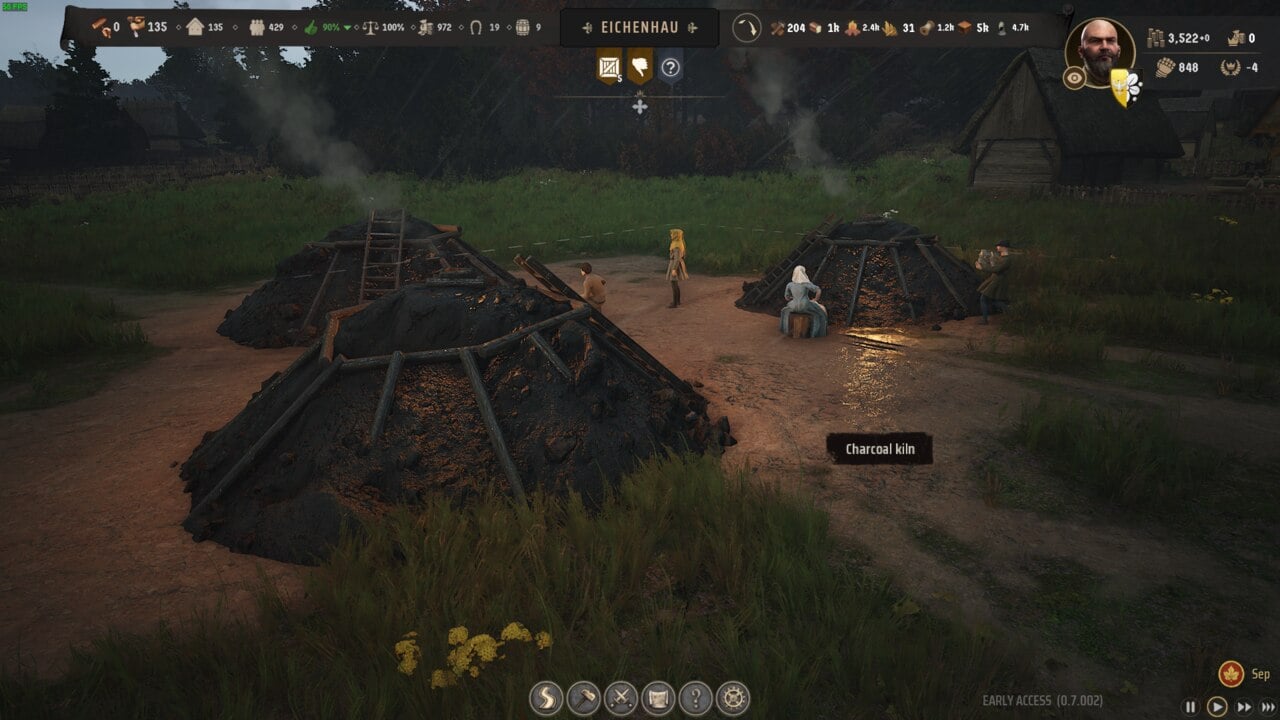
Charcoal Kiln
- Settlement Level availability – Small Village
- Construction menu section – Gathering
- Relocation – fixed
- Upgrades – none
The Charcoal Kiln transforms Firewood into Charcoal, specifically x2 Charcoal for every x1 Firewood, effectively upping refuelling efficiency. It’s particularly useful in large settlements. The Charcoal Kiln is, however, only available once you’ve spent a Development Point in the tech tree to unlock Charcoal Burning. Points are awarded every time you hit the next Settlement Level.
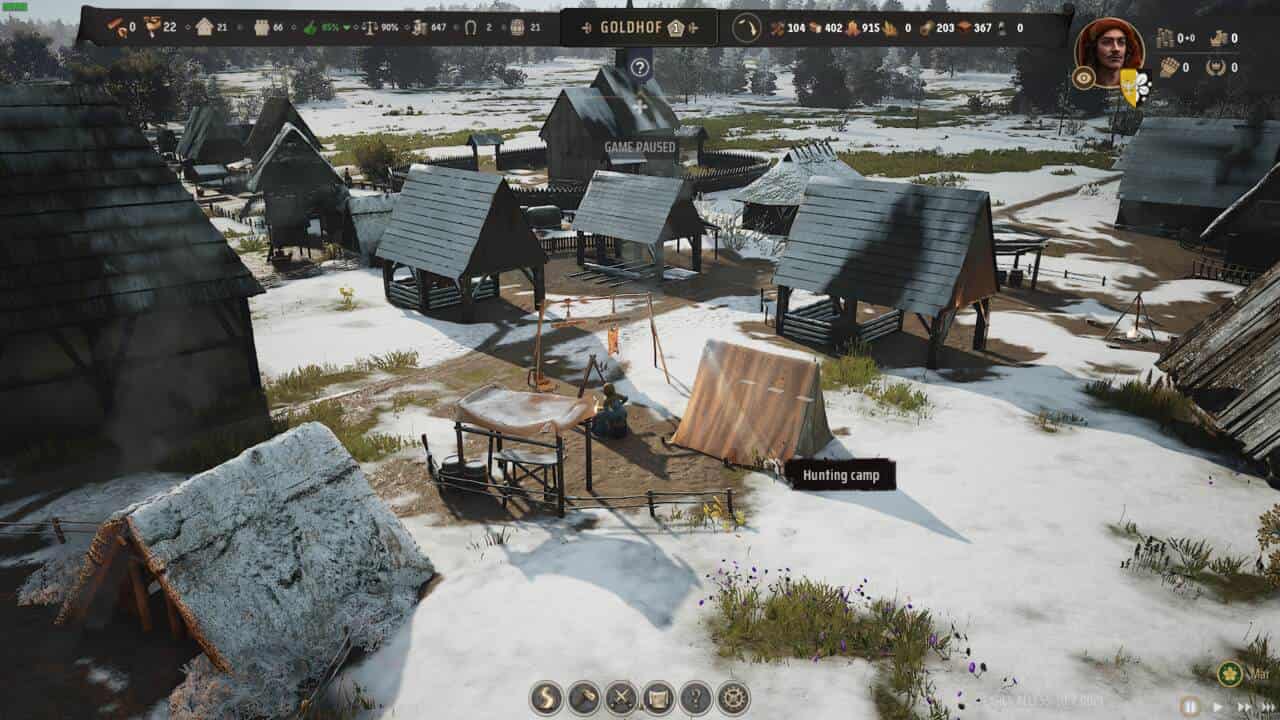
Hunting Camp
- Settlement Level availability – Settler’s Camp
- Construction menu section – Gathering
- Relocation – free
- Upgrades – none
The Hunting Camp sends workers to hunt Wild Animals (represented by an animal paw icon on the map) and gather both Meat and Hides. Try to build it as close to Wild Animals as possible to improve gathering efficiency. You’ll also want to be careful not to over hunt as this runs the risk of depleting the Wild Animals spot entirely. To limit this, you can adjust the Hunting Limit by clicking on the Hunting Camp. Make sure it’s always set a number lower than the hunting spots max population.
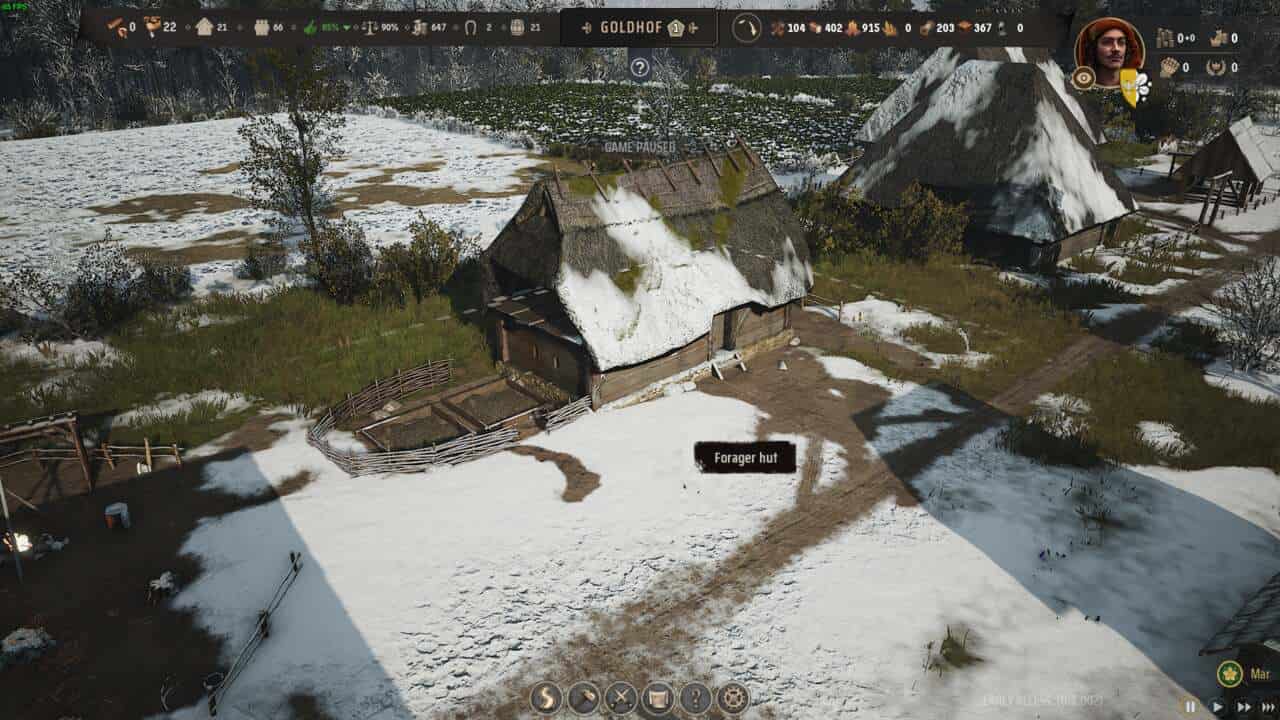
Forager Hut
- Settlement Level availability – Settler’s Camp
- Construction menu section – Gathering
- Relocation – free
- Upgrades – Herbs
The Forager Hut is responsible for sending workers to gather Berries from Berry Deposits out in the wild. As with forestry buildings and the Hunting Camp in Manor Lords, proximity to the deposit is recommended to speed up gathering. Unlike Hunting Camps, there’s no risk of depleting the deposit as the Berries grow back seasonally every year.
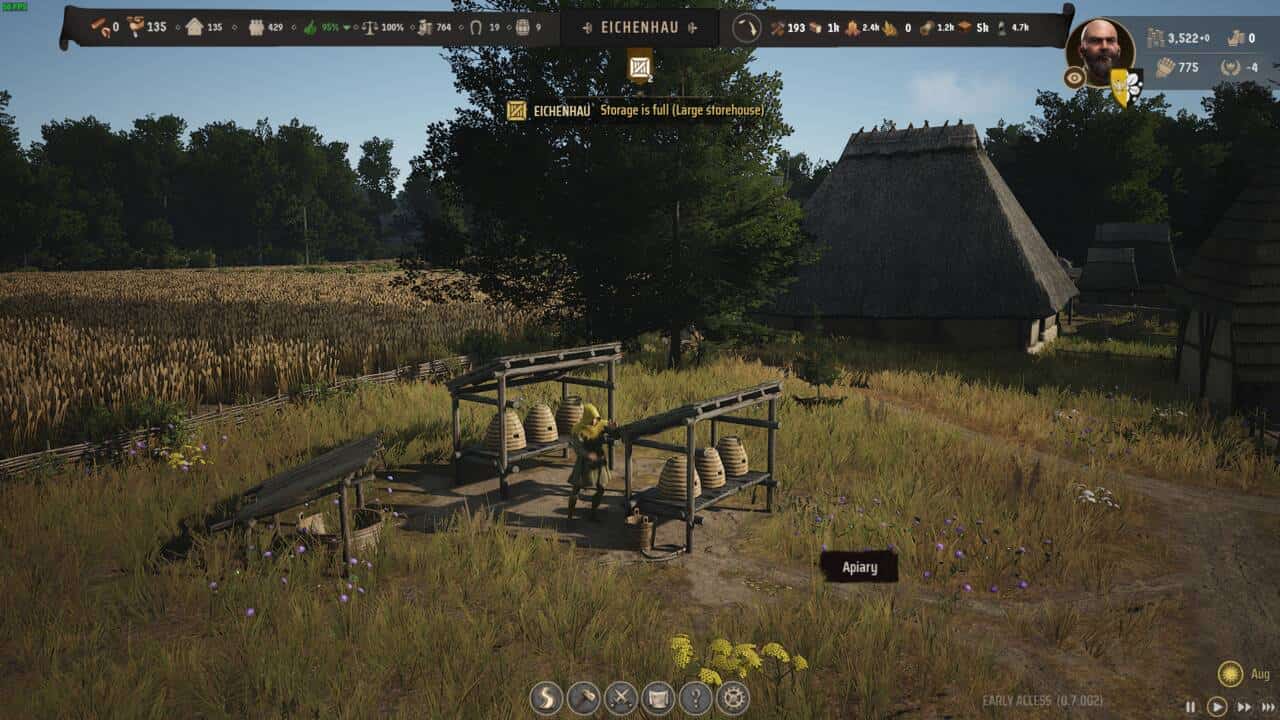
Apiary
- Settlement Level availability – Settler’s Camp
- Construction menu section – Gathering
- Relocation – fixed
- Upgrades – none
Workers assigned to an Apiary will harvest Honey, a food source for your villagers. There’s no placement requirements as the Apiary produces Honey on site. Note, however, that every region of your fiefdom can have a maximum of two Apiaries. Additionally, Apiary isn’t available as default. You’ll need to spend one Development Point on the Beekeeping tech to unlock the building.
Mining buildings
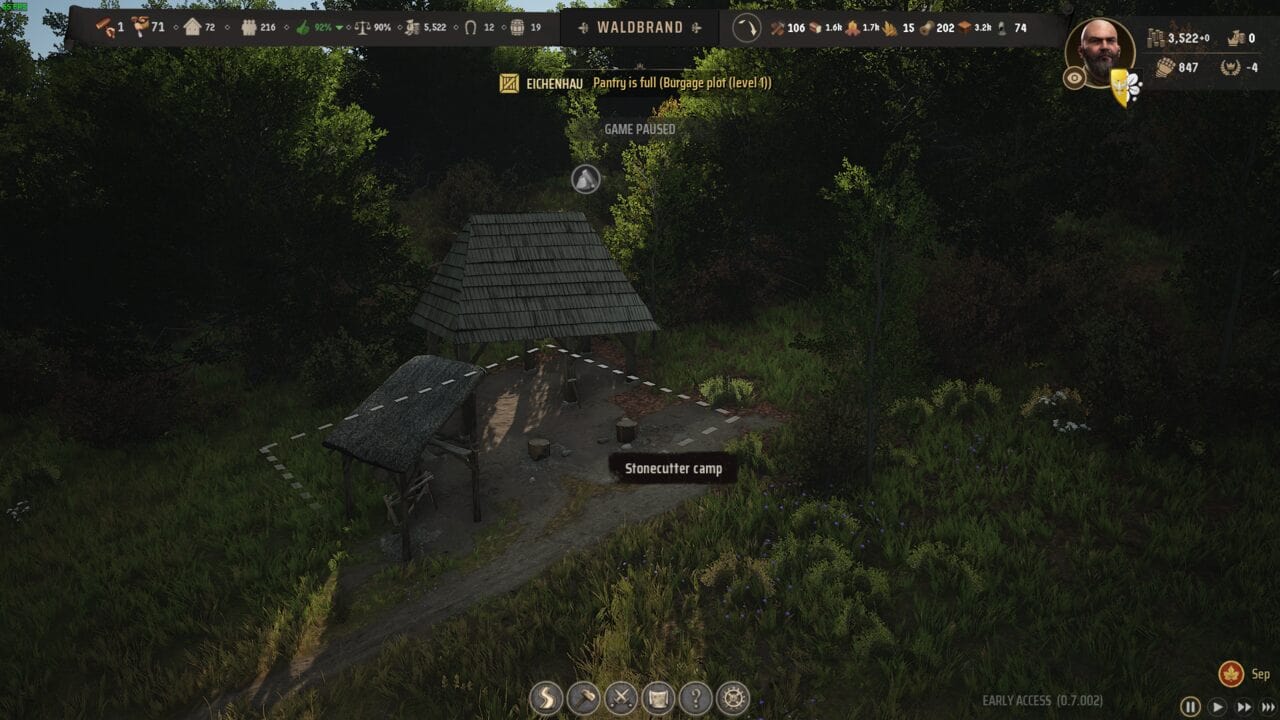
Stonecutter Camp
- Settlement Level availability – Settler’s Camp
- Construction menu section – Mining
- Relocation – free
- Upgrades – none
The Stonecutter Camp is used to gather Stone from Stone Deposits. As with many resource gathering buildings, constructing it as close to the depot helps reduce transport delays and ups productivity. Stone Deposits have a fixed amount of Stone, unless you’re lucky enough to have spawned a Rich Deposit and the Deep Mining upgrade, so you’ll eventually deplete the deposit.
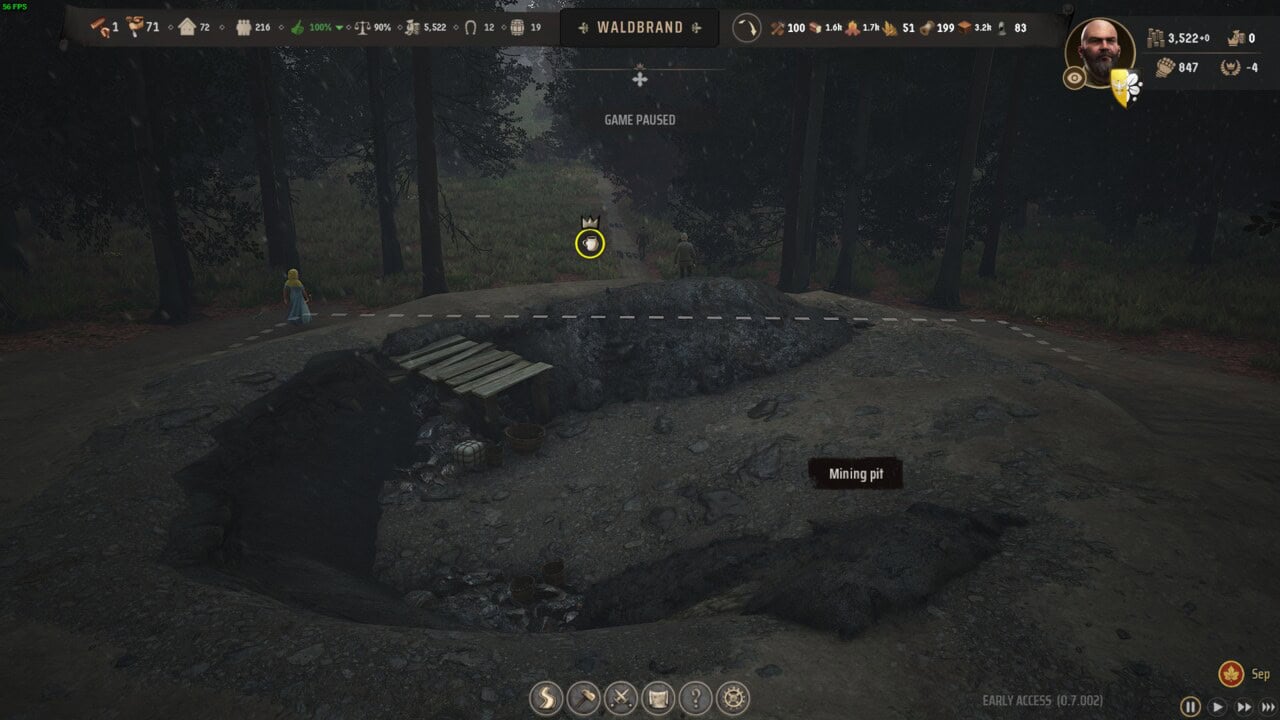
Mining Pit
- Settlement Level availability – Settler’s Camp
- Construction menu section – Mining
- Relocation – fixed
- Upgrades – none
The Mining Pit is responsible for extracting Iron Ore from Iron Deposits and Clay from Clay Deposits. Unlike most other Manor Lords buildings, Mining Pits can be built directly on top of deposits to improve efficiency. Much like the Stonecutter Camp, you’ll want to pay close attention to depleting the deposit. Aim for Rich Deposits and get the Deep Mining development for an infinite source of Iron Ore or Clay.
Logistics buildings
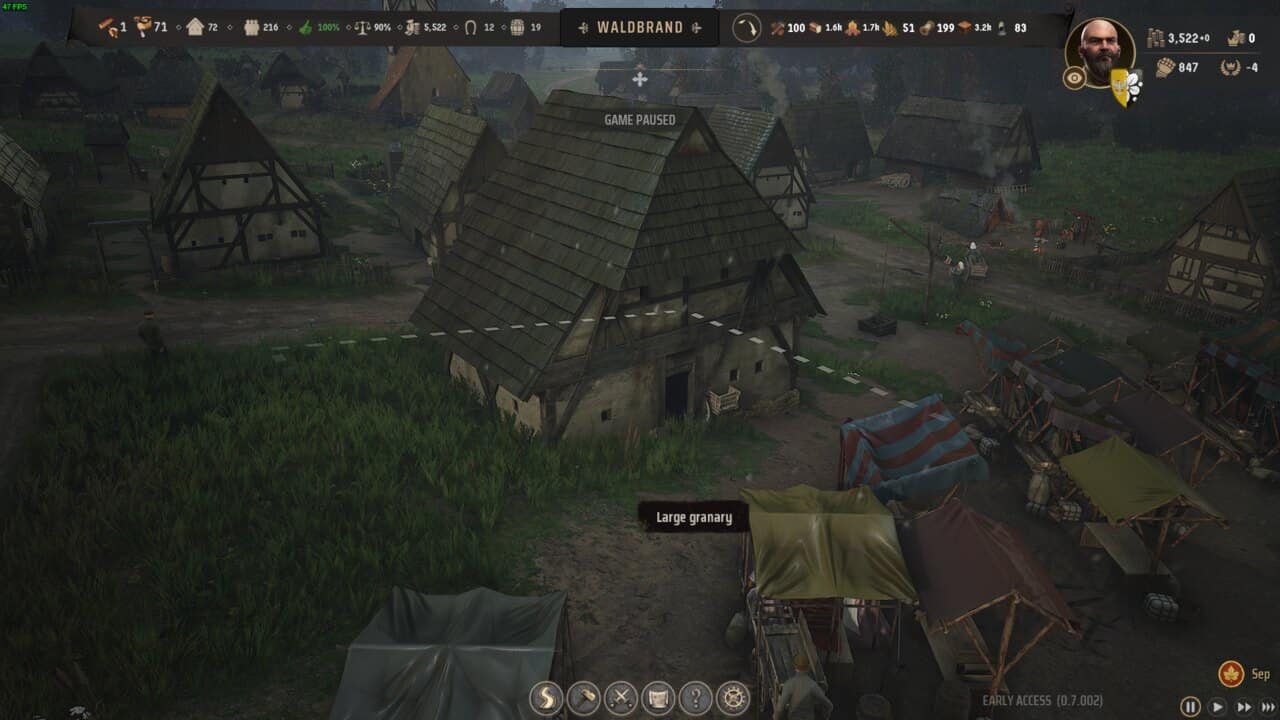
Granary
- Settlement Level availability – Settler’s Camp
- Construction menu section – Logistics
- Relocation – fixed
- Upgrades – Large Granary
The Granary plays a crucial role as it’s the building used to collect, store, and distribute crops and food to pantries and production buildings throughout your village. Additionally, the Granary is also responsible for establishing Marketplace Stalls to share out stored food to burgage plots. For efficiency, we recommend building a Granary near to your Marketplaces, Farmhouse, burgage plots, and any other building that uses a food source in its production chain.
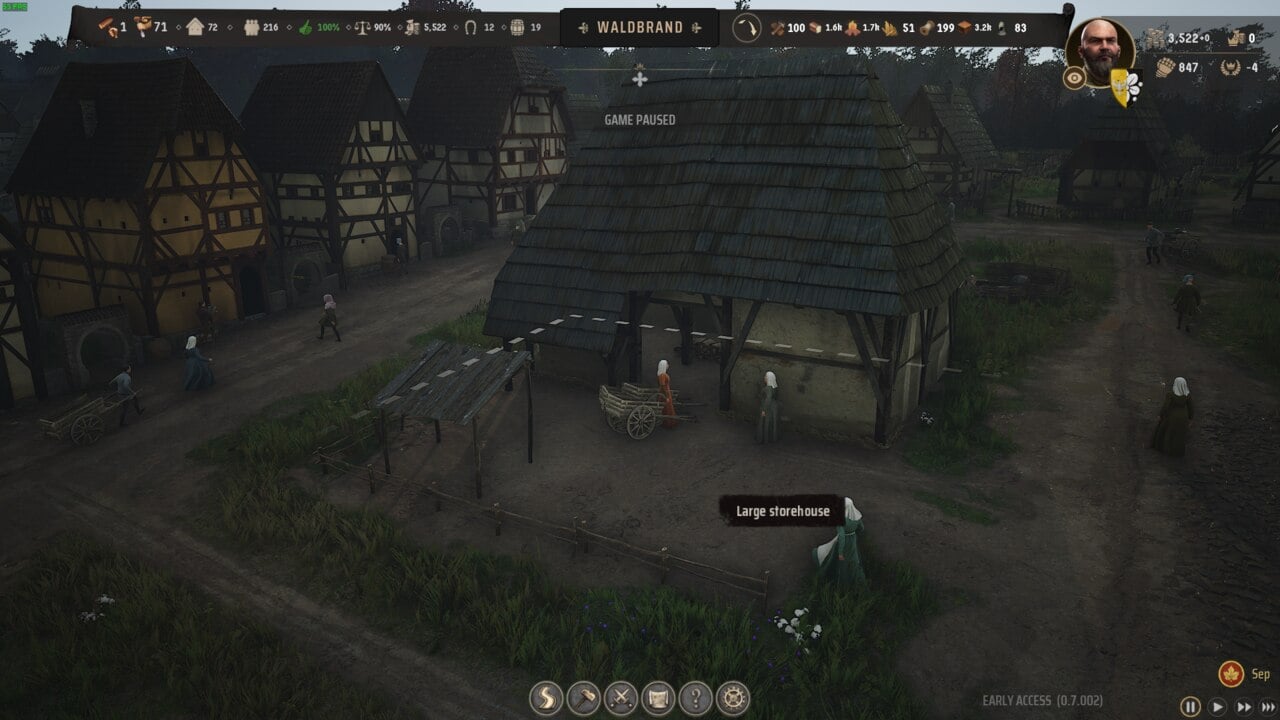
Storehouse
- Settlement Level availability – Settler’s Camp
- Construction menu section – Logistics
- Relocation – fixed
- Upgrades – Large Storehouse
The Storehouse is basically the equivalent of the Granary but for all non-food resources and commodities. It’s where workers collect, store, and distribute goods like Planks, weapons for your army, Clothes, Dyes, Tools, Firewood, and much more. A Storehouse is best built at the centre of your Manor Lords settlement and, ideally, close to your production buildings to keep the distance workers need to transport goods to a minimum.
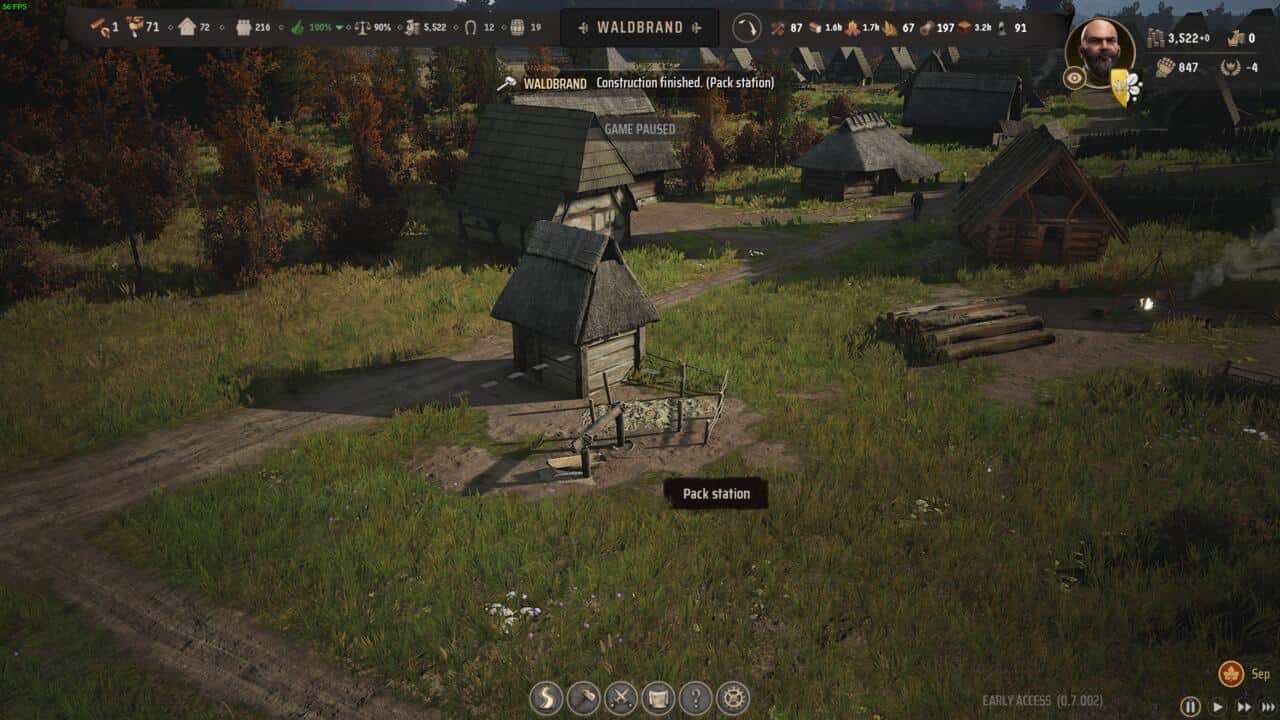
Pack Station
- Settlement Level availability – Settler’s Camp
- Construction menu section – Logistics
- Relocation – fixed
- Upgrades – none
The Pack Station is used to send and receive goods, food, and commodities between different regions you currently administer. Instead of normal trade which relies on Regional Wealth, it works on a bartering basis whereby you need to select a resource to send and the resource you want to receive in exchange. You’ll also need to employ Mules to transport goods and have a Pack Station in the regions exchanging goods.
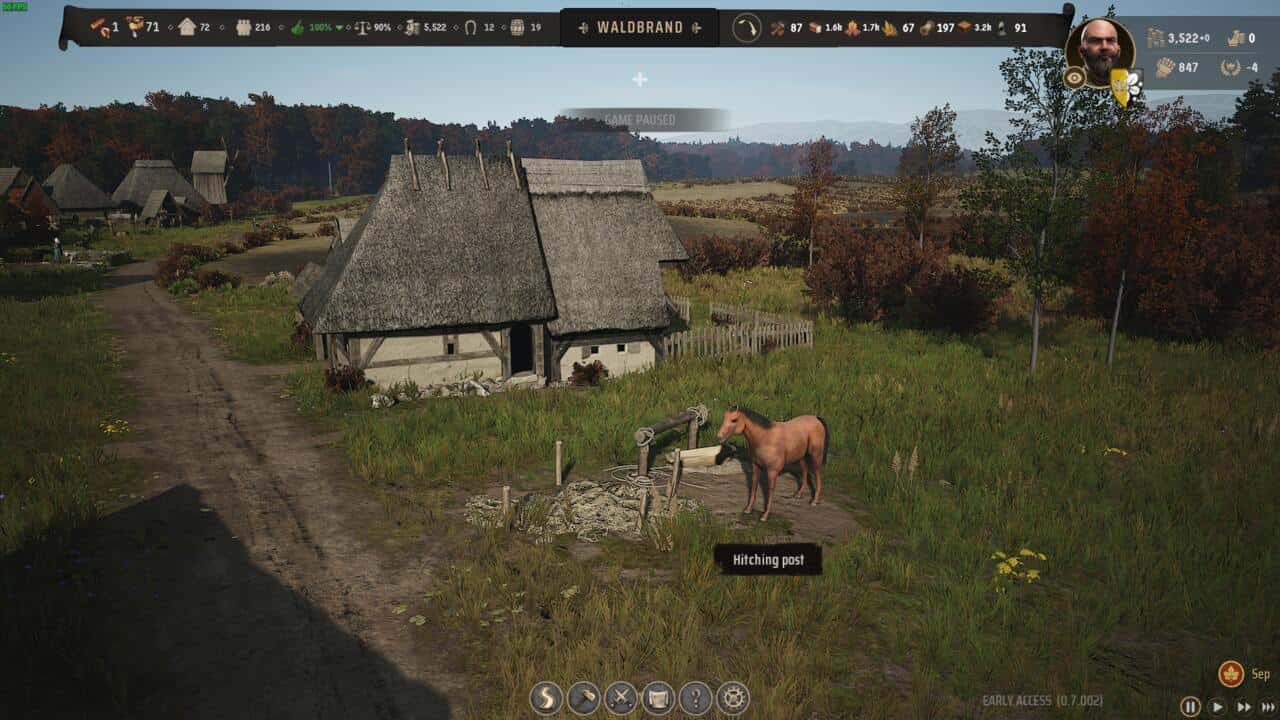
Hitching Post
- Settlement Level availability – Settler’s Camp
- Construction menu section – Logistics
- Relocation – free
- Upgrades – Small Stable
The Hitching Post is the equivalent of a burgage plot for Oxen and Horses, the livestock used to transport heavy construction materials to building sites and Logging Camps but also crops between fields and the Farmhouse if you have the Heavy Plow Development upgrade. A Hitching Post has Stable Space for one Ox, which you can increase to two by upgrading it to a Small Stable.
Residential buildings
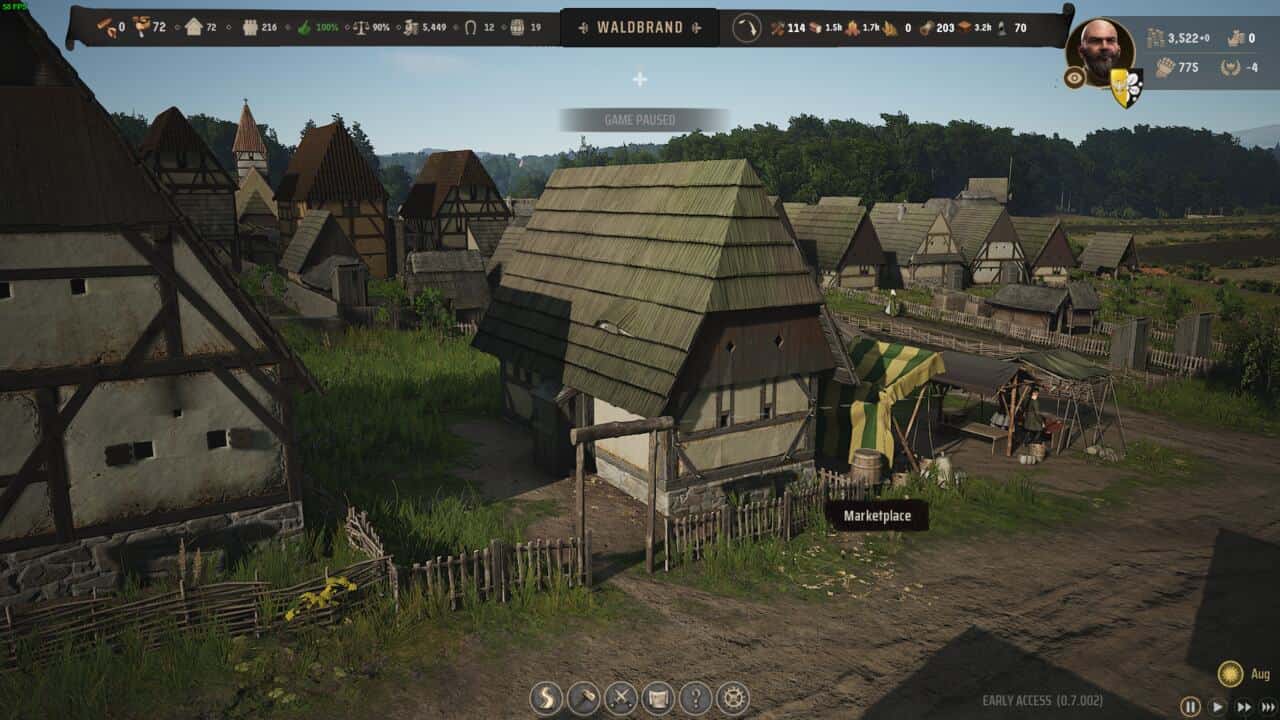
Burgage Plot
- Settlement Level availability – Settler’s Camp
- Construction menu section – Residential
- Relocation – flexible plot
- Upgrades – Level 2, Level 3
Burgage Plots are Manor Lords take on the house or home. They provide living space for villagers, specifically space for one family per Burgage Plot, unless it’s been expanded, in which case it can accommodate two families. Burgage Plots can be upgraded up to level 3. To level them up, you’ll need to meet specific market supply and amenity requirements such as providing food, clothing, access to a church, and more. Burgage Plots are best constructed near a Marketplace to ensure workers can distribute goods efficiently.
Burgage plots also have what are called extensions. These passively produce specific food items, weapons, clothes, armor, and other commodities:
- Bakery
- Blacksmith’s Workshop
- Brewery Extension
- Tailor’s Workshop
- Cobbler’s Workshop
- Joiner’s Workshop
- Armorer’s Workshop
- Bowyer’s Workshop
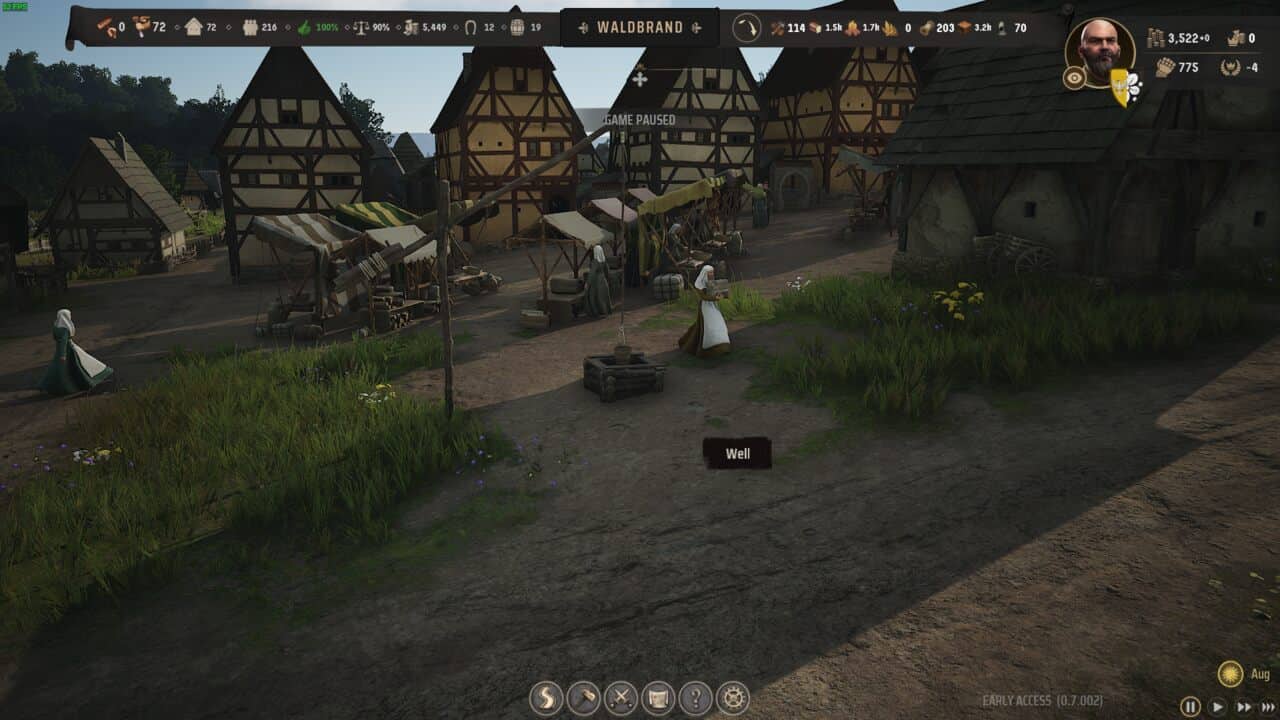
Well
- Settlement Level availability – Settler’s Camp
- Construction menu section – Residential
- Relocation – fixed
- Upgrades – none
A Well provides a source of clean drinking water to burgage plot inhabitants. Depending on what settings you select before firing up a new game, you may need to place them over Underground Water sources that you can check for using the Underground Water Overlay.
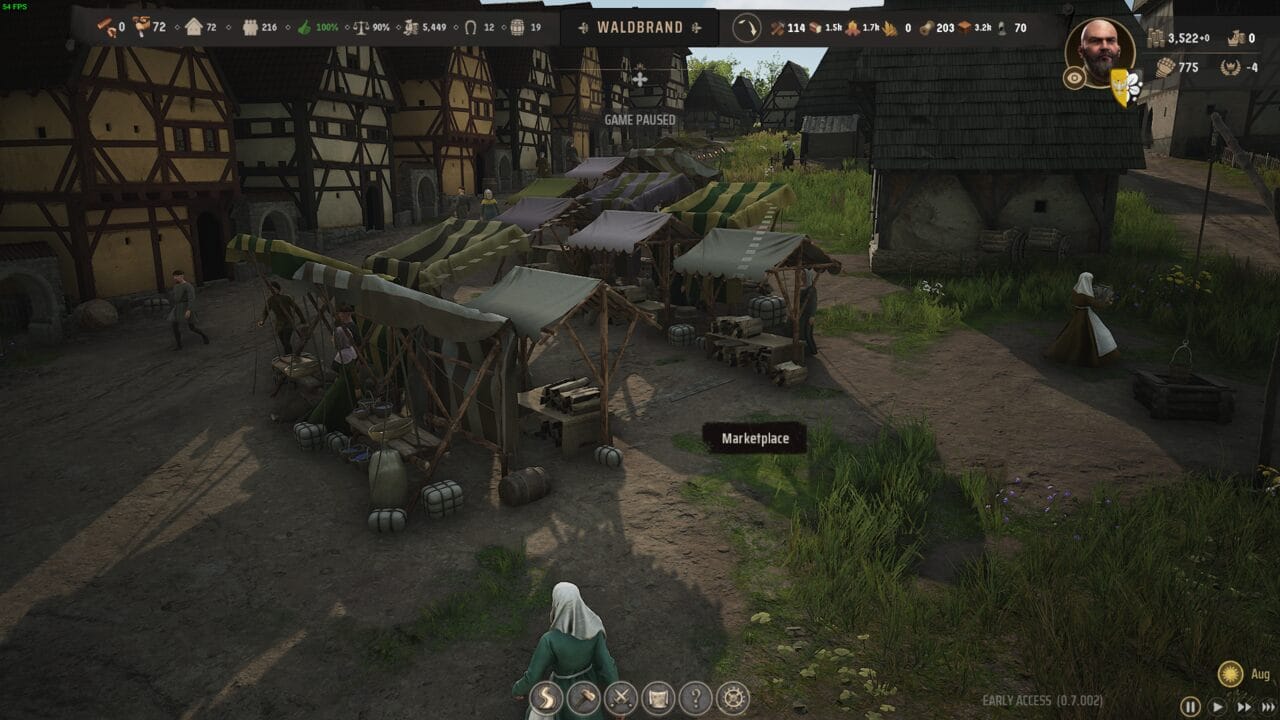
Marketplace
- Settlement Level availability – Settler’s Camp
- Construction menu section – Residential
- Relocation – fixed
- Upgrades – none
A Marketplace is a player assigned zone where families can establish stalls to distribute food, commodities, and other goods. They are a vital part of providing burgage plots with the goods they need, notably those to tick off residential requirements for upgrades and to keep Approval high. They are best built close to burgage plots.
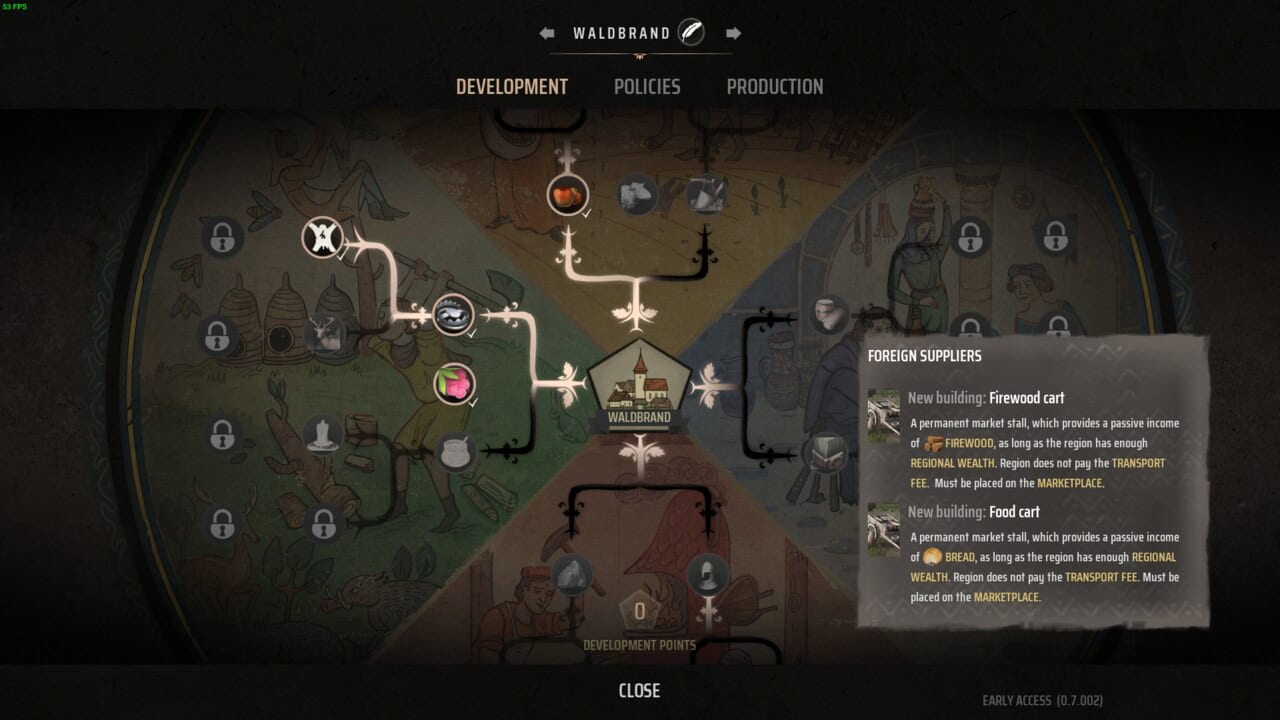
Firewood Cart
- Settlement Level availability – Small Village
- Construction menu section – Residential
- Relocation – free
- Upgrades – none
The Firewood Cart is a placeable, permanent market stall that provides a passive source of Firewood. It can only be placed on an existing market place and requires Regional Wealth to operate. It’s unlocked by spending a Development Point on the Foreign Suppliers tech tree upgrade.
Food Cart
- Settlement Level availability – Small Village
- Construction menu section – Residential
- Relocation – free
- Upgrades – none
The Food Cart is similar to the Firewood Cart, except that it provides a passive source of Bread for your villagers. It’s also placed on an existing Marketplace and only unlocks once you have the Foreign Supplies Development research.
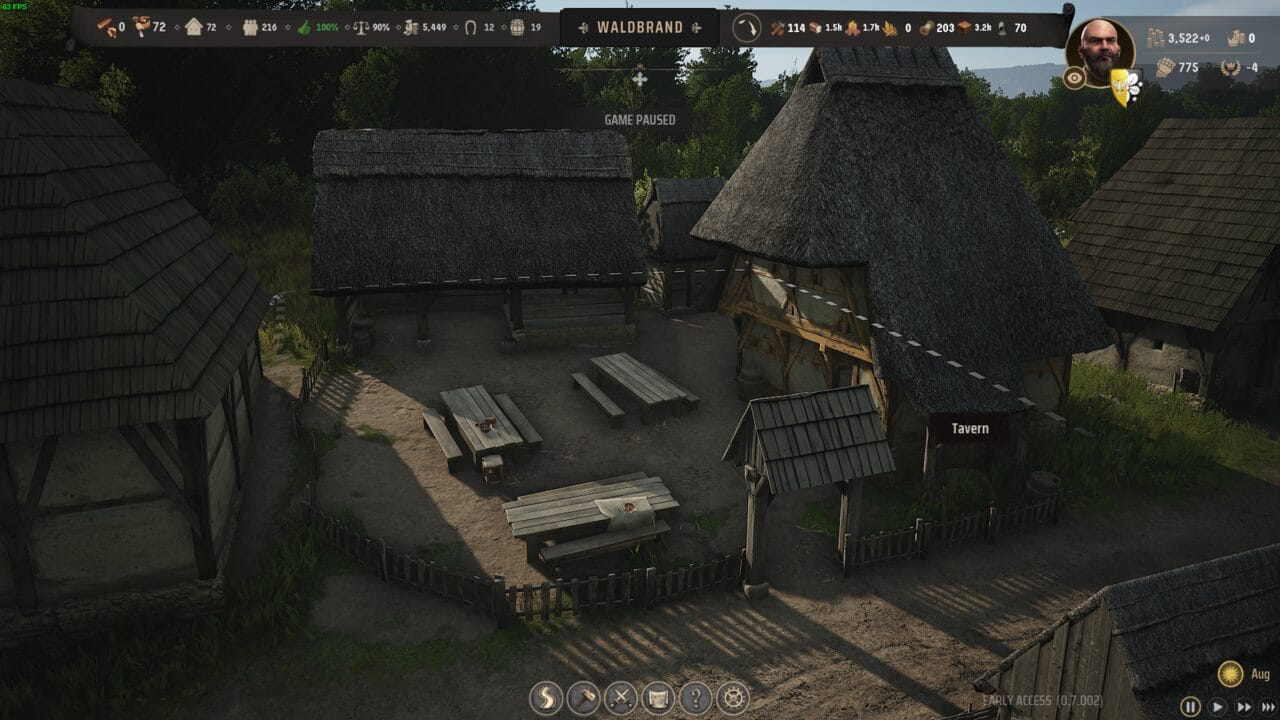
Tavern
- Settlement Level availability – Settler’s Camp
- Construction menu section – Residential
- Relocation – fixed
- Upgrades – none
The Tavern is a source of entertainment, serving up ale to your villagers and meeting the Entertainment requirements to upgrade burgage plots to level 3. It doesn’t need to be placed in any specific location, as a single tavern will cover the entire region, but to speed up delivery of ale, we recommend building it close to your Brewery burgage plots and malthouse.
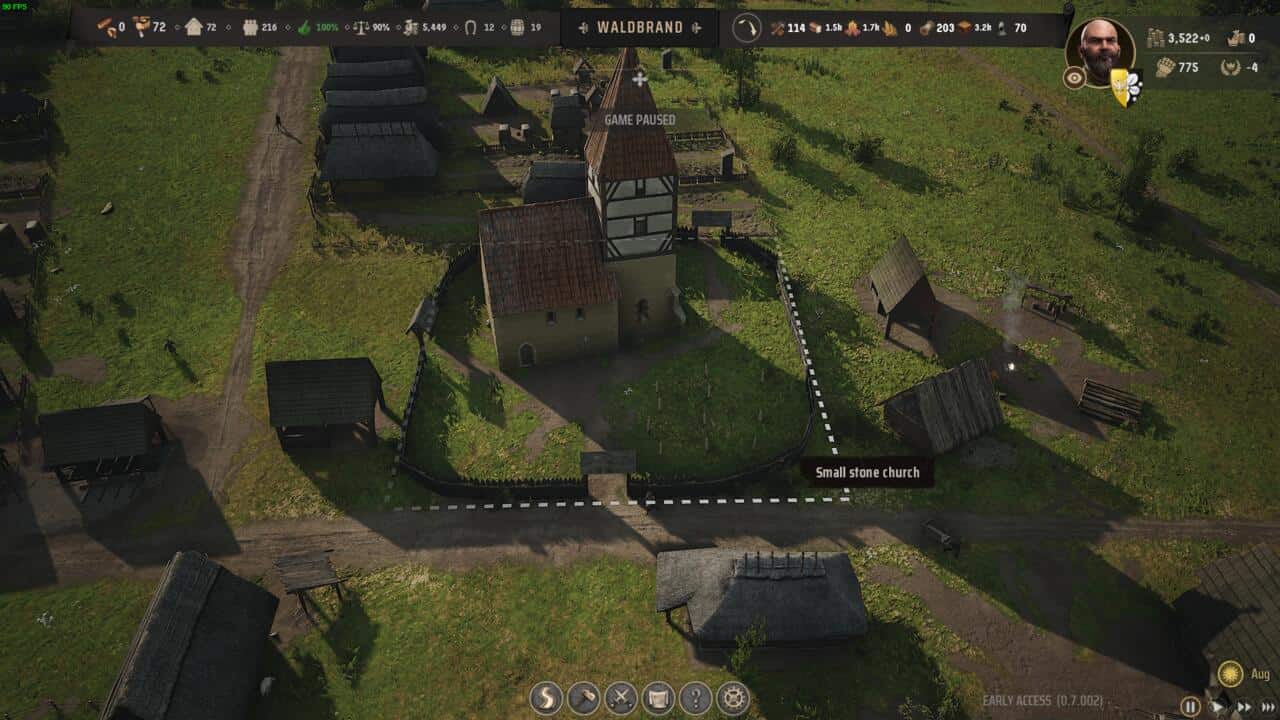
Wooden Church
- Settlement Level availability – Settler’s Camp
- Construction menu section – Residential
- Relocation – fixed
- Upgrades – Small Stone Church
Provides a source of Faith to your settlement, meeting the Faith requirement for burgage plots. Additionally, it serves as a cemetery for any dead villagers. The Wooden Church fulfils the level 1 Faith requirement, while the upgraded Small Stone Church meets the level requirement.
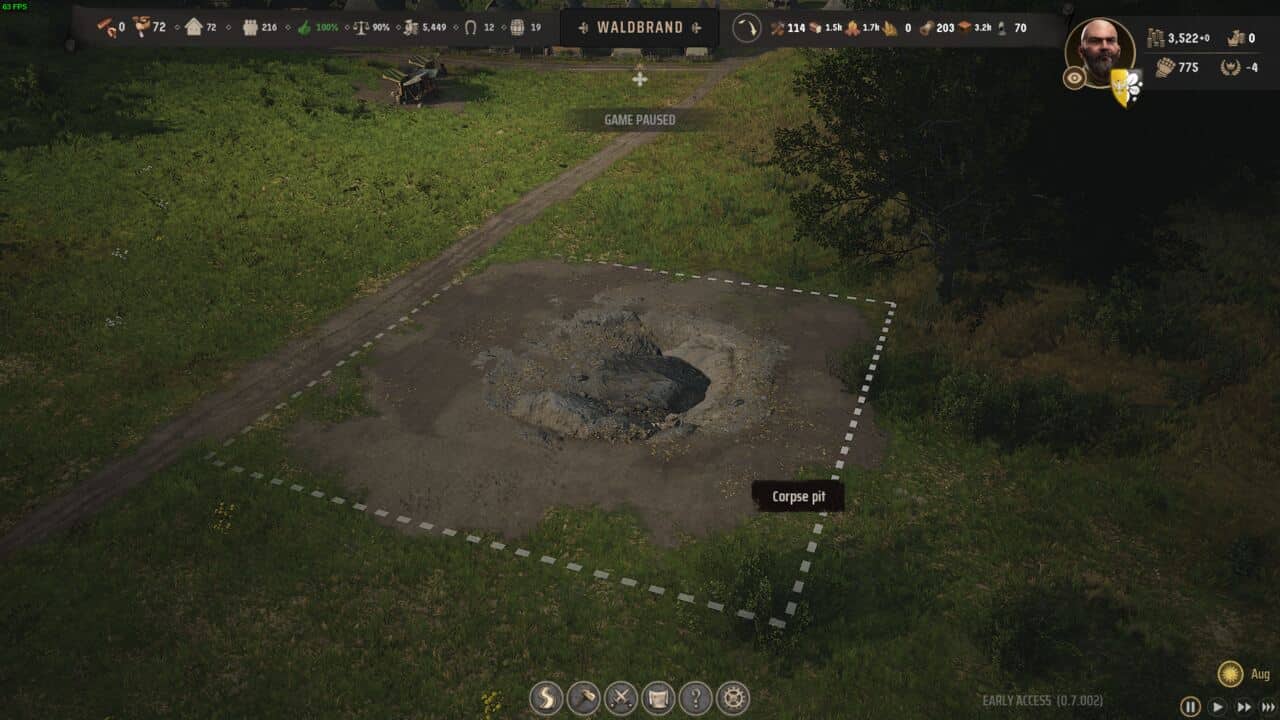
Corpse Pit
- Settlement Level availability – Settler’s Camp
- Construction menu section – Residential
- Relocation – fixed
- Upgrades – none
The Corpse Pit is used to bury enemy soldiers and bandits that have died in regions you command. Leaving corpses lying around can affect Approval rating so it’s worth building a Corpse Pit after winning battles against enemy feudal lords.
Farming buildings
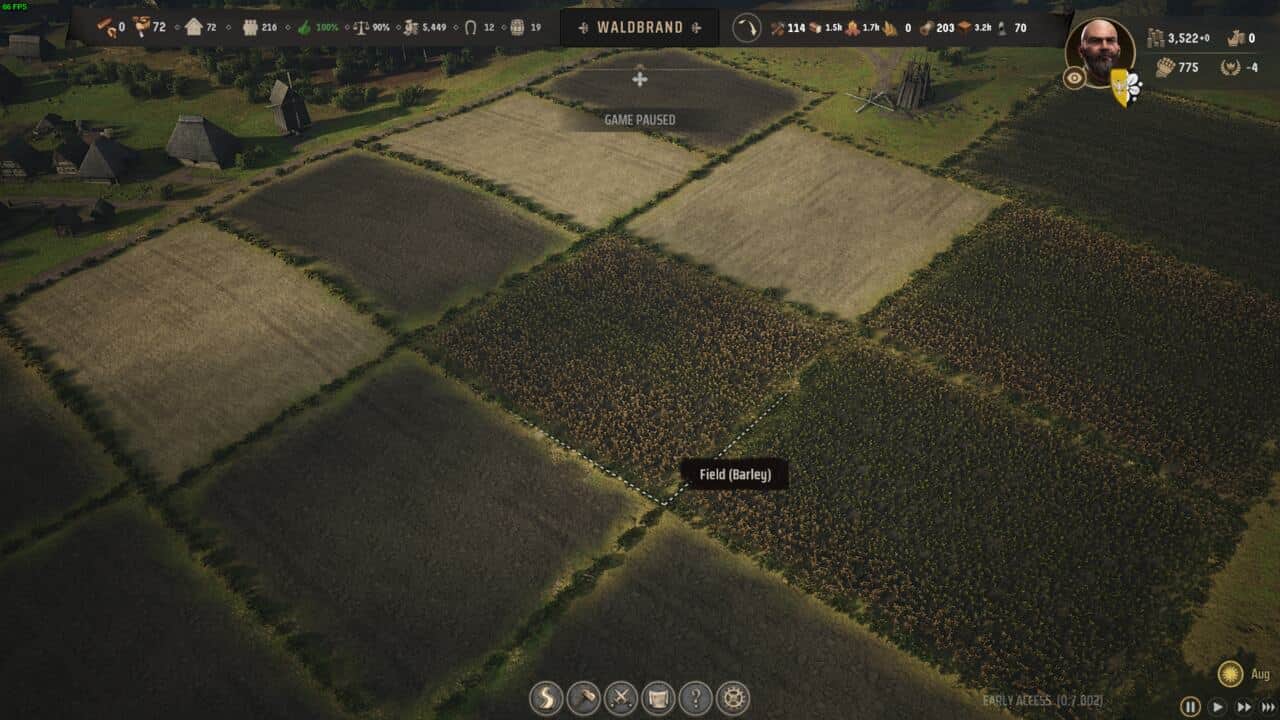
Field
- Settlement Level availability – Settler’s Camp
- Construction menu section – Farming
- Relocation – flexible plot
- Upgrades – none
Fields allow you to grow one of several crops – wheat, flax, barley, and rye (if you’ve unlocked the Rye Cultivation Development). Though you’re free to layout fields as you see fit, we recommend building them no larger than 1 Morgen especially in the early game. Note that fields also require a Farmhouse staffed with workers to plow, sow, and harvest crops.
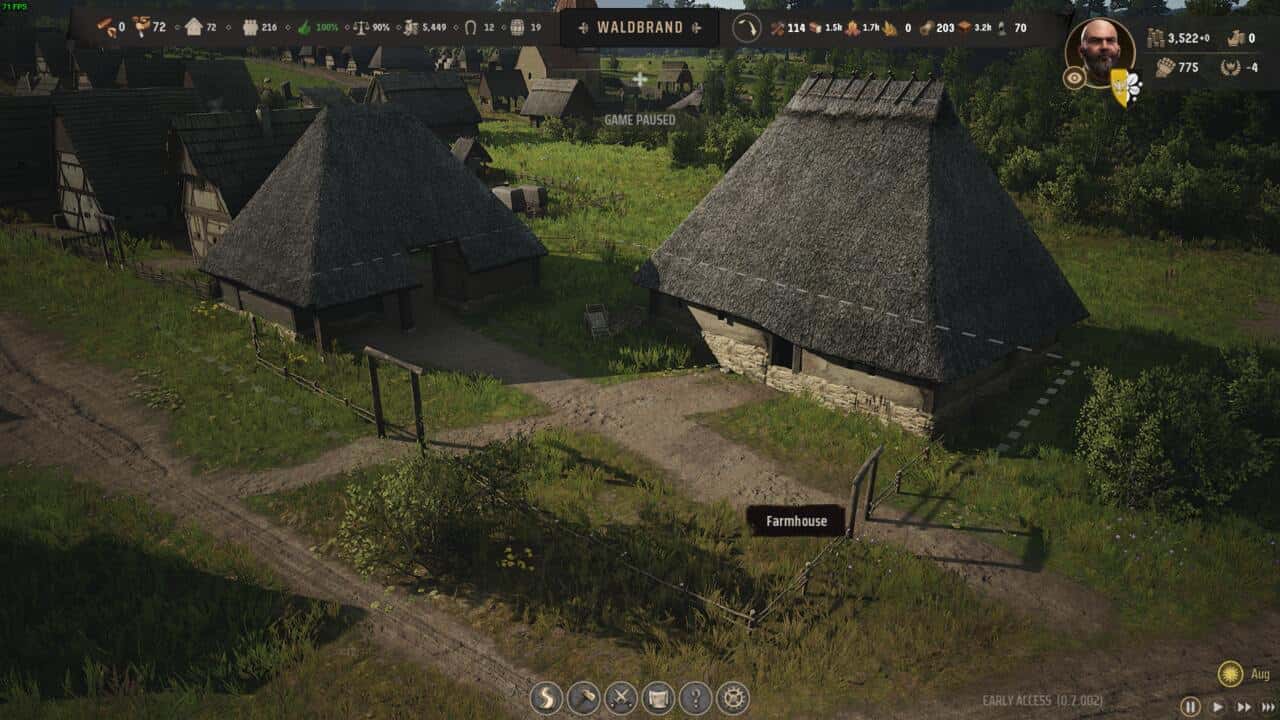
Farmhouse
- Settlement Level availability – Settler’s Camp
- Construction menu section – Farming
- Relocation – fixed
- Upgrades – Plowing Station
The Farmhouse is used as the base of operations for farmers working in fields. Farmhouse workers are responsible for plowing fields early in the year, sowing seeds in spring, and then harvesting crops from September onward. The Farmhouse also acts as temporary storage for harvested crops and also threshes Wheat into Grain, which is then made into floor at a Windmill.
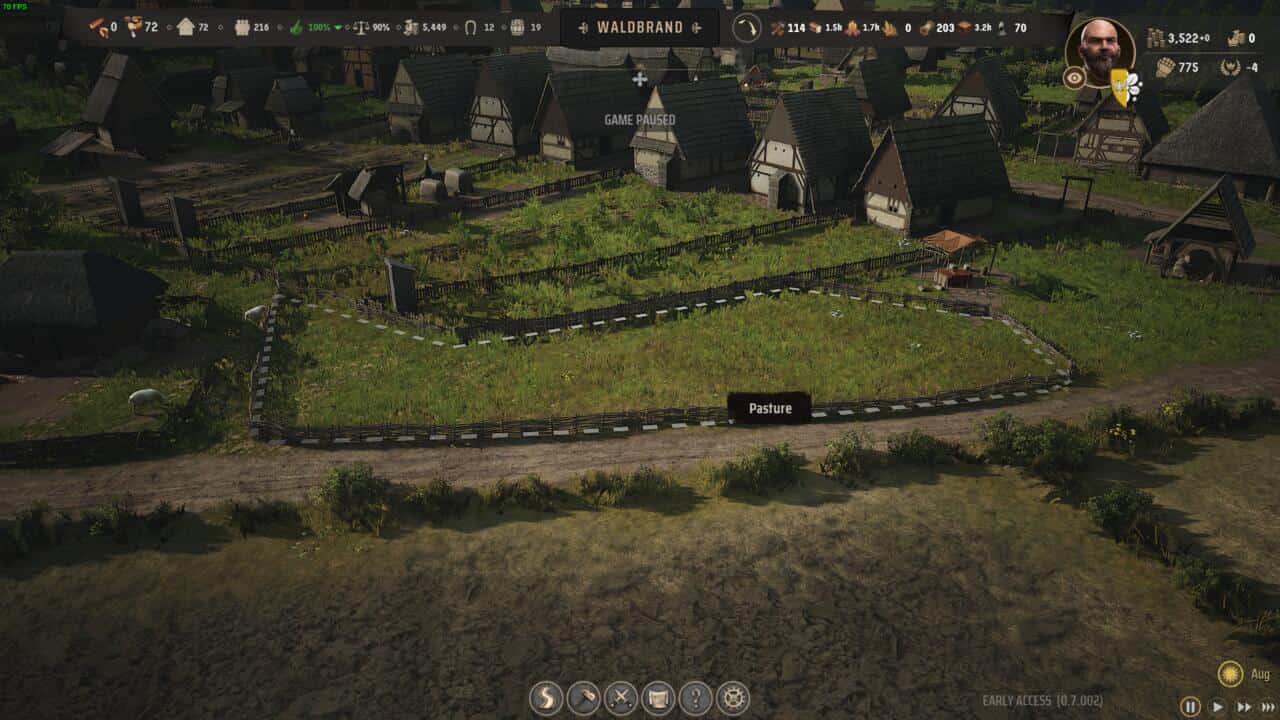
Pasture
- Settlement Level availability – Settler’s Camp
- Construction menu section – Farming
- Relocation – flexible plot
- Upgrades – none
A Pasture is the equivalent of a field but for livestock. It provides pasture space for sheep and lambs who produce wool at a Sheep Farm. You’re free to set the plot size and shape of a pasture and the larger the pasture, the more livestock can graze there.
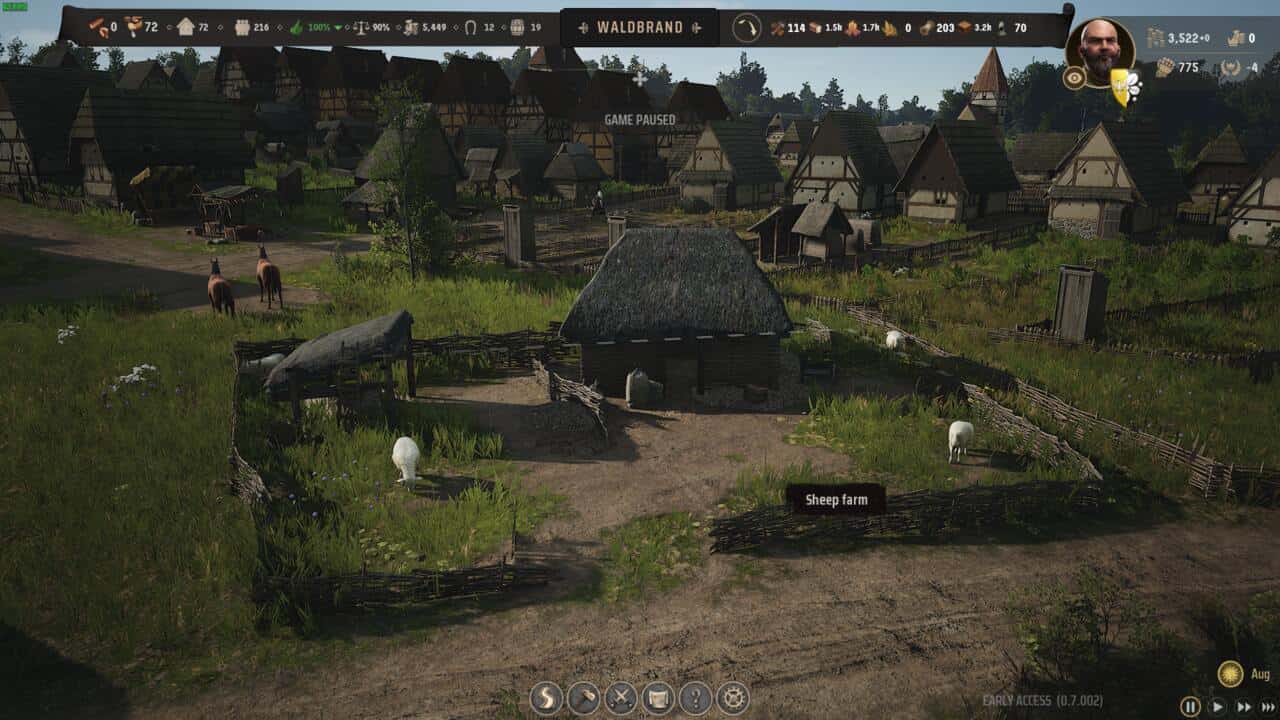
Sheep Farm
- Settlement Level availability – Settler’s Camp
- Construction menu section – Farming
- Relocation – fixed
- Upgrades – none
A Sheep Farm is responsible for caring for Sheep and Lamb while also producing Wool. Each Sheep Farm has a set Pasture Space for five sheep, meaning it can only house a maximum of five sheep within its fences. Any excess sheep will automatically graze in a Pasture if you have one constructed.
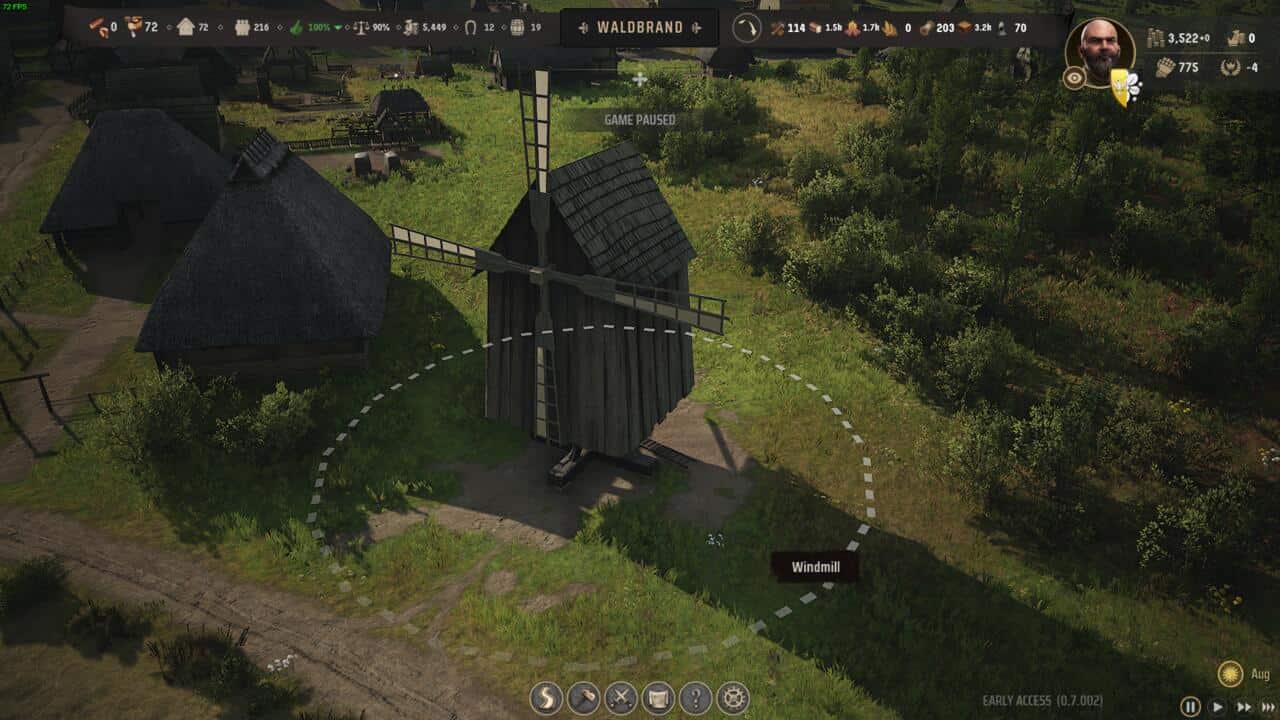
Windmill
- Settlement Level availability – Settler’s Camp
- Construction menu section – Farming
- Relocation – fixed
- Upgrades – none
The Windmill is the building responsible for transforming the grain gathered from wheat fields and threshed at the Farmhouse into flour, which is then in turn baked in Bread at a Communal Over or burgage plot Bakery extension. In Manor Lords, the Windmill is impacted by an efficiency rating that goes up when placed on empty land far from any trees or buildings.
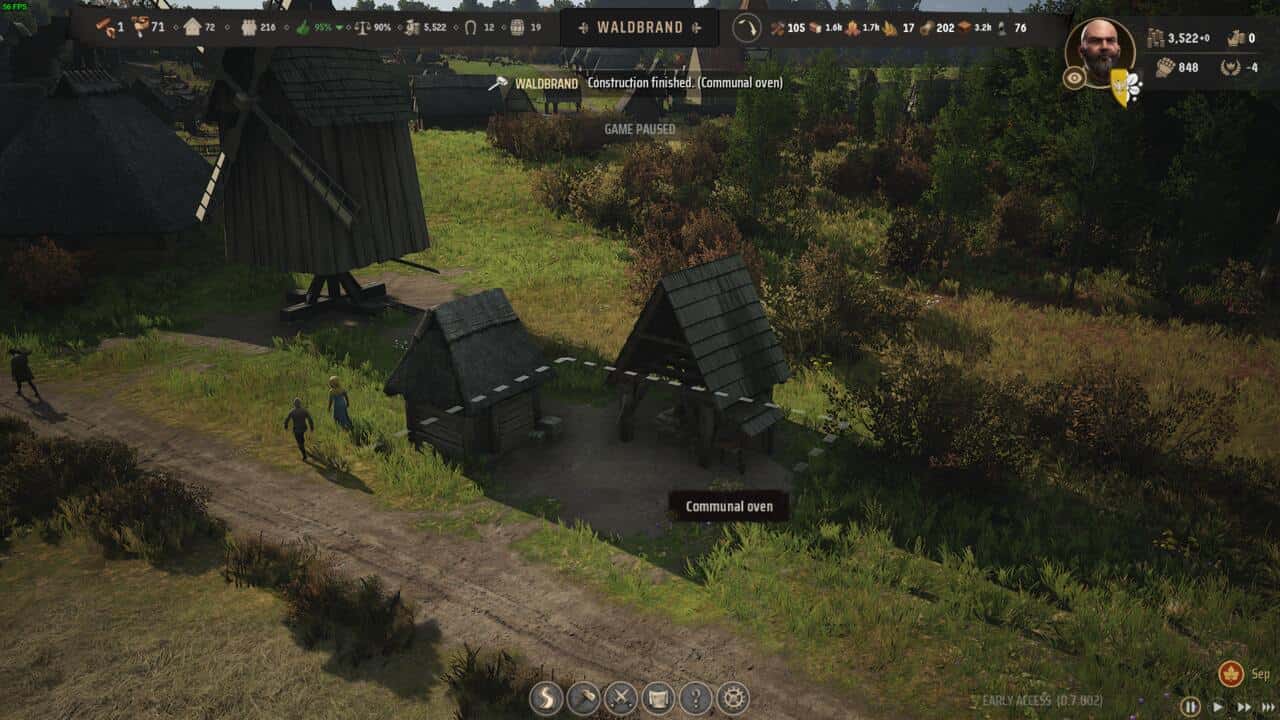
Communal Oven
- Settlement Level availability – Settler’s Camp
- Construction menu section – Farming
- Relocation – fixed
- Upgrades – none
Workers employed at a Communal Over are tasked with using Floor to produce Bread, which is then distributed to market stalls and on to burgage plots to feed villagers. Flour is provided to the Communal Oven by a Windmill, which mills Grain into Flour. The Communal Oven is best built close to your Windmill and Storehouses.
Industry buildings
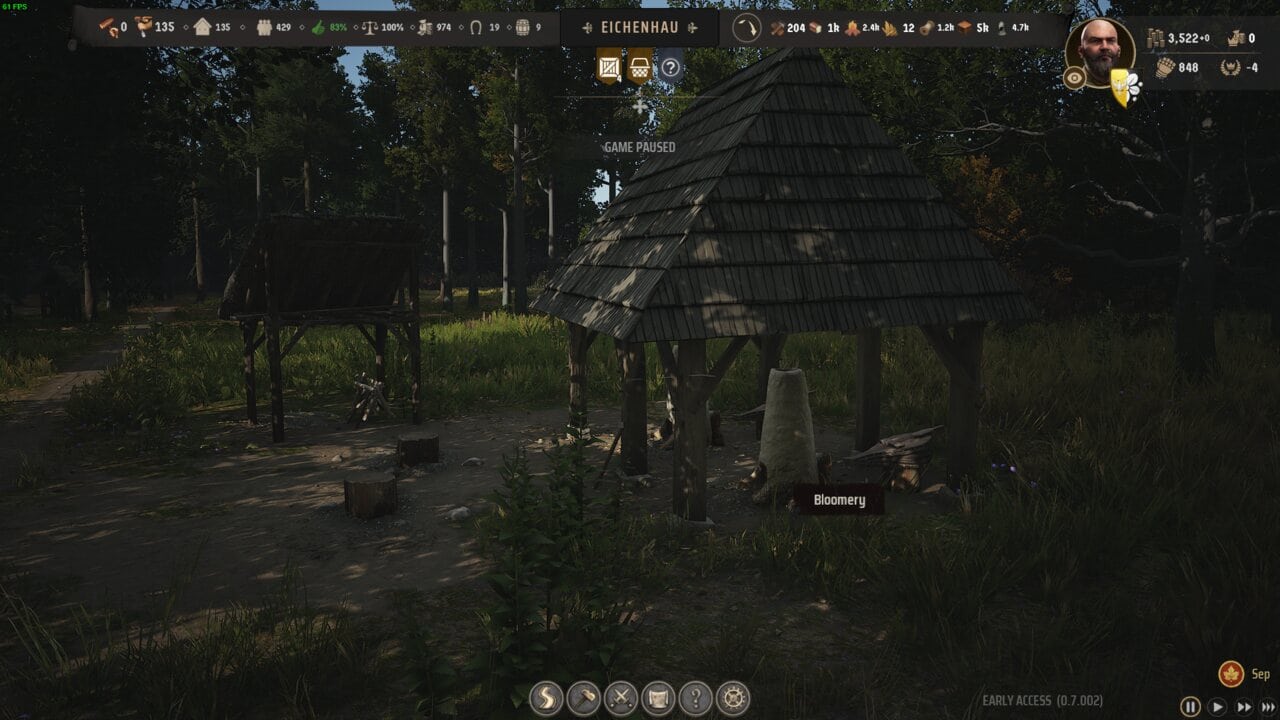
Bloomery
- Settlement Level availability – Settler’s Camp
- Construction menu section – Industry
- Relocation – fixed
- Upgrades – none
The Bloomery takes raw Iron Ore extracted from an Iron Deposit and transforms it into Iron Slabs, which is typically used in the production of weapons, shields, and armor. The Bloomery requires a steady source of Firewood or Charcoal so keep this in mind when deciding placement, which is typically not too far from a Mining Pit and Storehouse.
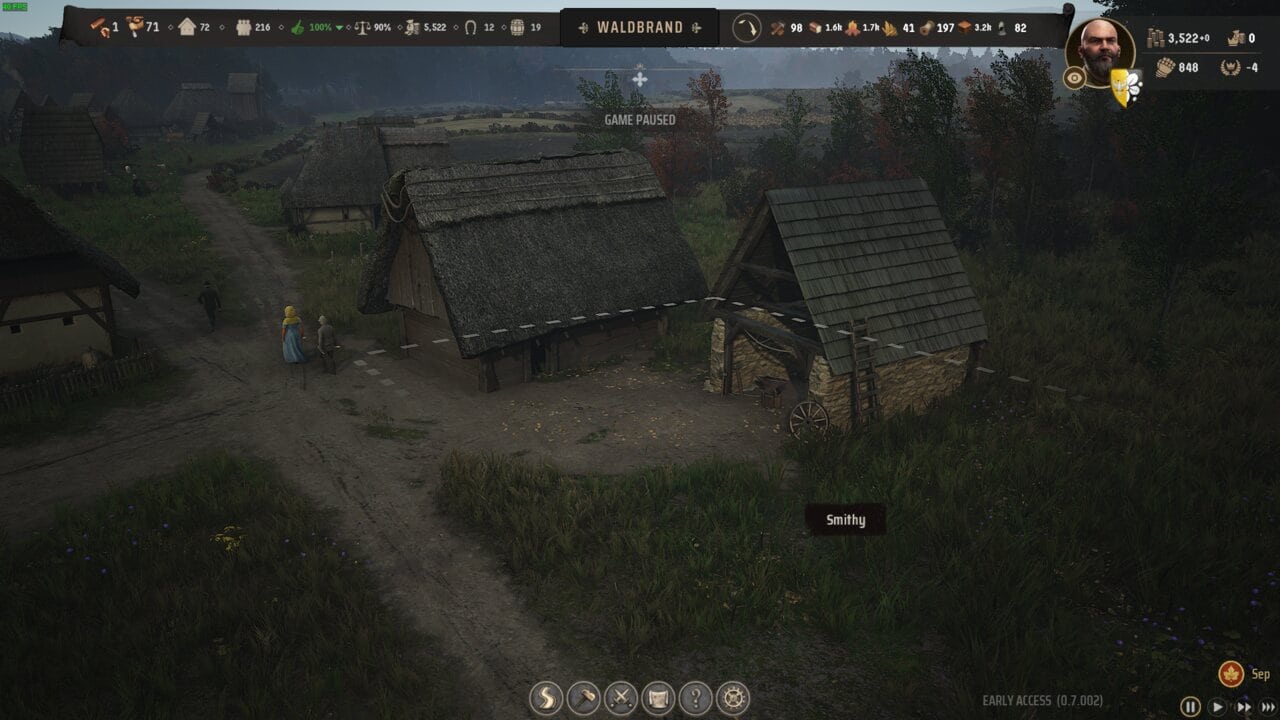
Smithy
- Settlement Level availability – Settler’s Camp
- Construction menu section – Industry
- Relocation – fixed
- Upgrades – none
The Smithy takes Iron Slabs and crafts them into Tools. Much like the Bloomery, the Smithy requires a monthly refuel of Firewood or Charcoal. We’ve yet to figure out what role Tools play in Manor Lords other than as a trade commodity. We’ll report back and update this guide if we learn more.
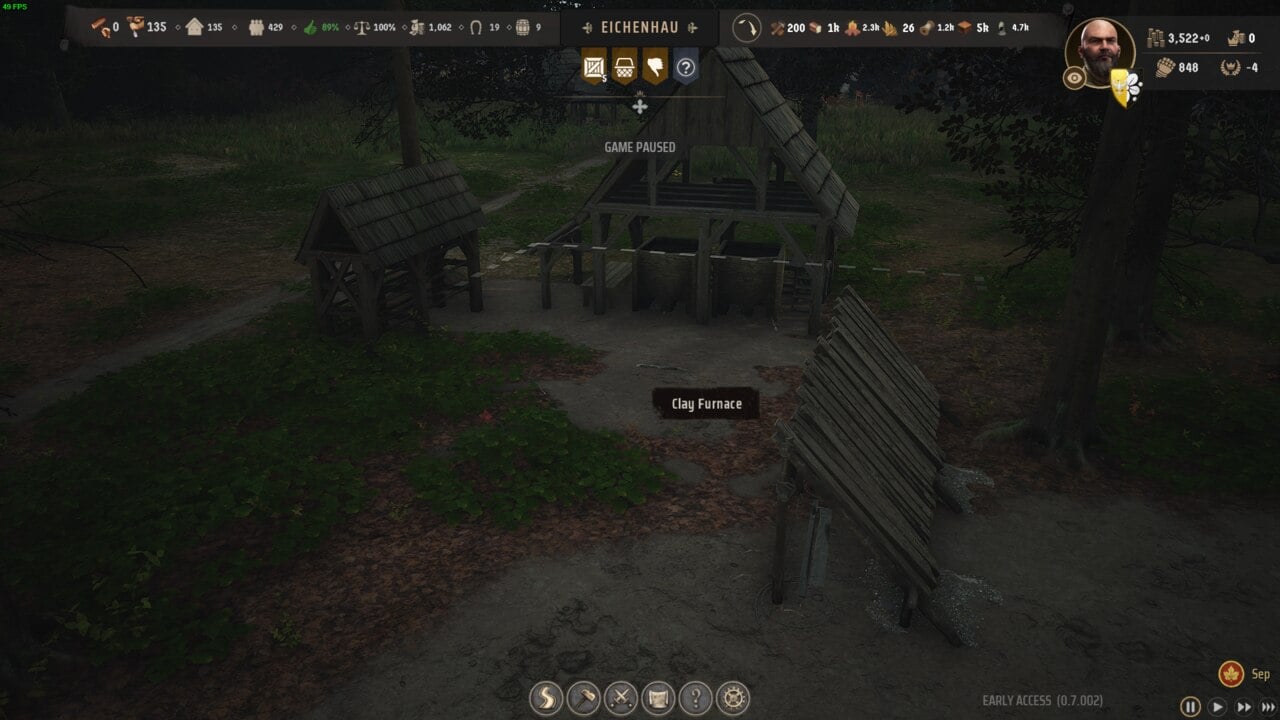
Clay Furnace
- Settlement Level availability – Settler’s Camp
- Construction menu section – Industry
- Relocation – fixed
- Upgrades – none
The Clay Furnace transforms Clay extracted from Clay Deposits into Clay Tiles, which are needed to construct buildings such as the Church and upgrade burgage plots. Like most other Industry buildings in Manor Lords, a Clay Furnace requires monthly refuelling to operate. For the most streamlined production chain, we recommend setting up your Clay Furance not far from your Mining Pit and Clay Deposit.
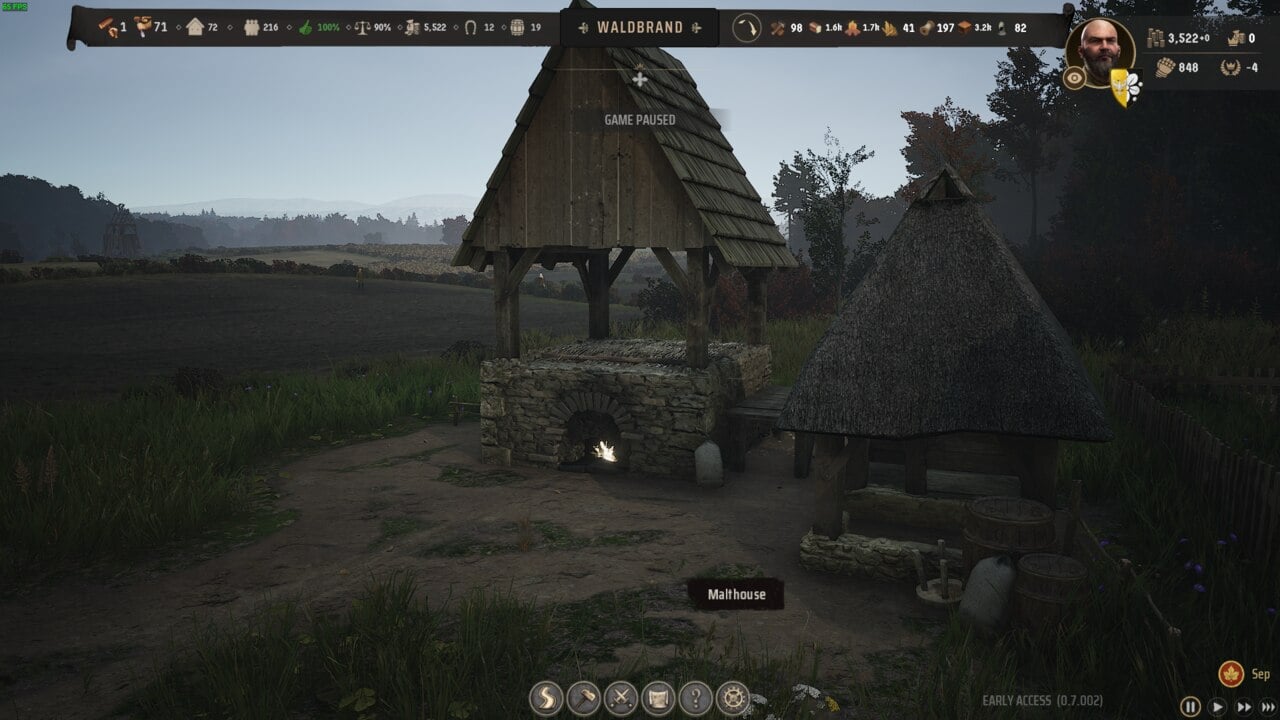
Malthouse
- Settlement Level availability – Settler’s Camp
- Construction menu section – Industry
- Relocation – fixed
- Upgrades – none
The Malthouse is responsible for taking Barley harvested from fields and turning it into Malt. Malt is then distributed to burgage plots with the Brewery extension and converted to Ale, which is then sent to the Tavern. The Malthouse requires monthly refuelling and is ideally constructed not far from a Farmhouse to speed up transportation.
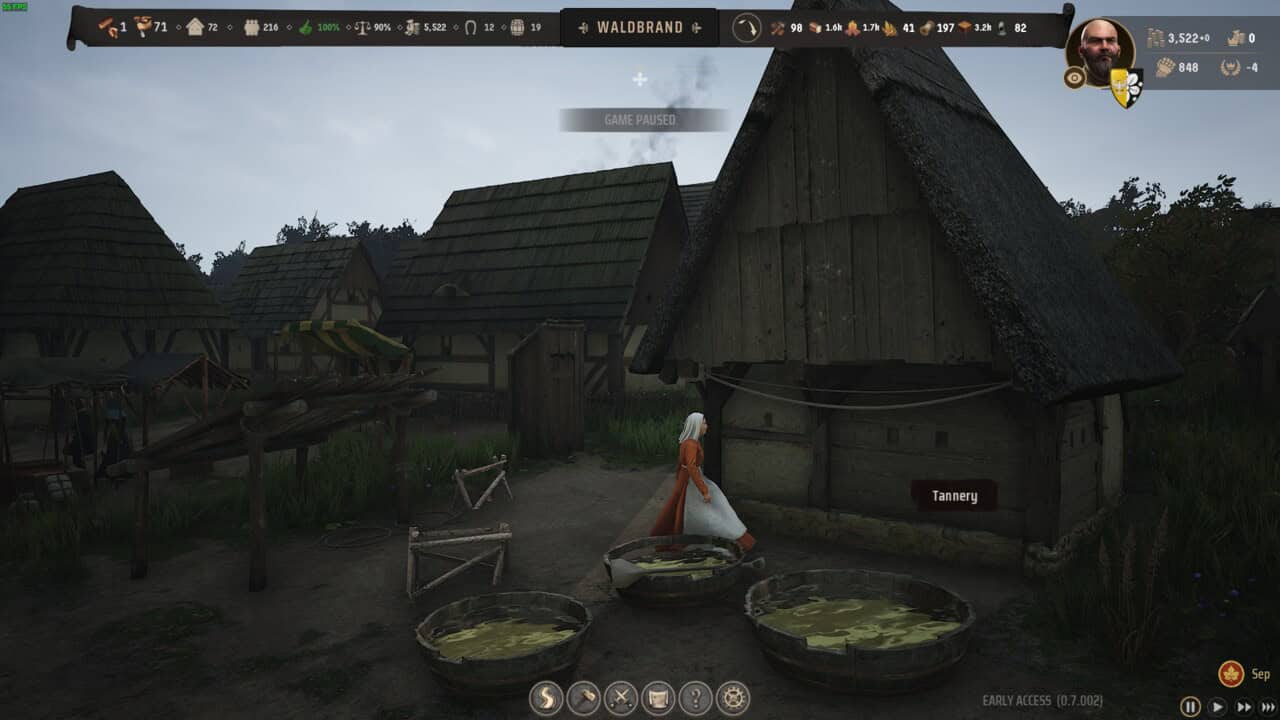
Tannery
- Settlement Level availability – Settler’s Camp
- Construction menu section – Industry
- Relocation – fixed
- Upgrades – none
The Tannery takes Hides (gathered by Hunting Camps and produced by Goat Shed burgage plot extensions) and transforms them into Leather, a resource required to produce Shoes at Cobbler’s Workshop burgage plot extensions. We recommend constructing a Tannery close to your main Storehouse to ensure a steady source of Hides.
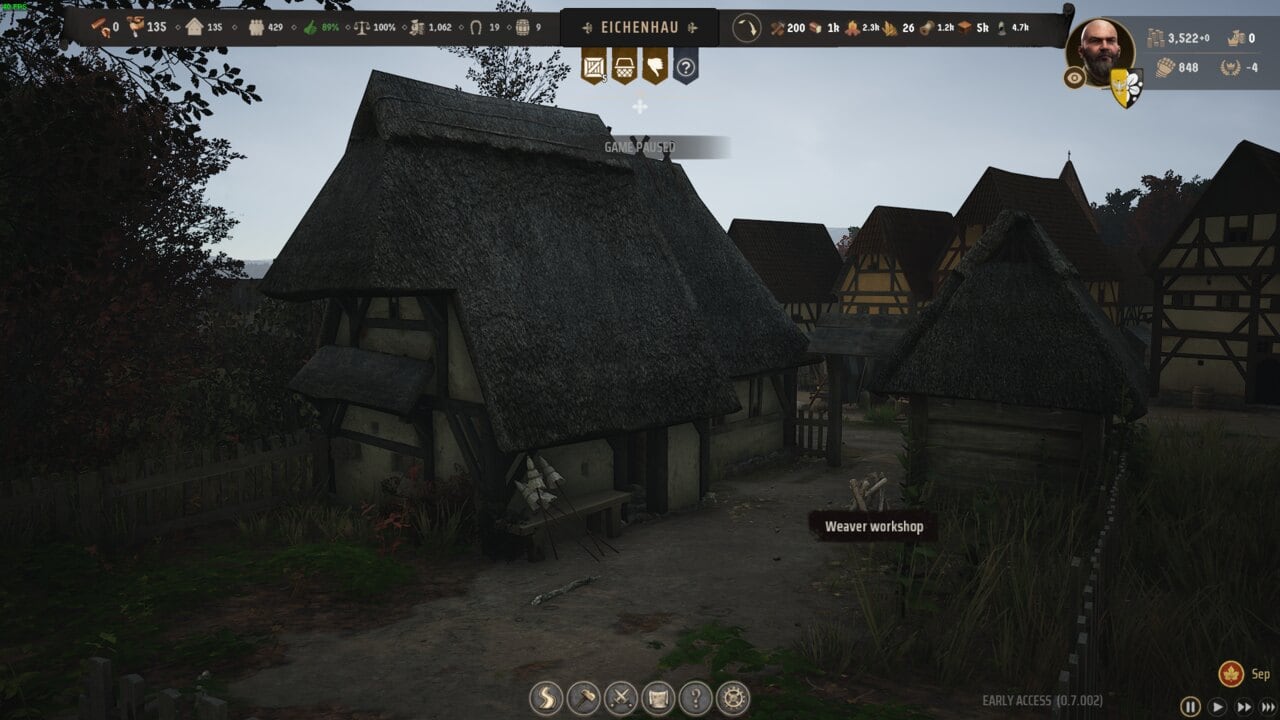
Weaver Workshop
- Settlement Level availability – Settler’s Camp
- Construction menu section – Industry
- Relocation – fixed
- Upgrades – none
The Weaver Workshop works similarly to the Tannery. It specialises in converting Wool into Yarn and Flax into Linen. Wool is obtained from Sheep at a Sheep Farm, while Flax is grown in Fields and harvested by a Farmhouse. The ideal Weaver Workshop shop is nearby to a Sheep Farm and Farmhouse.
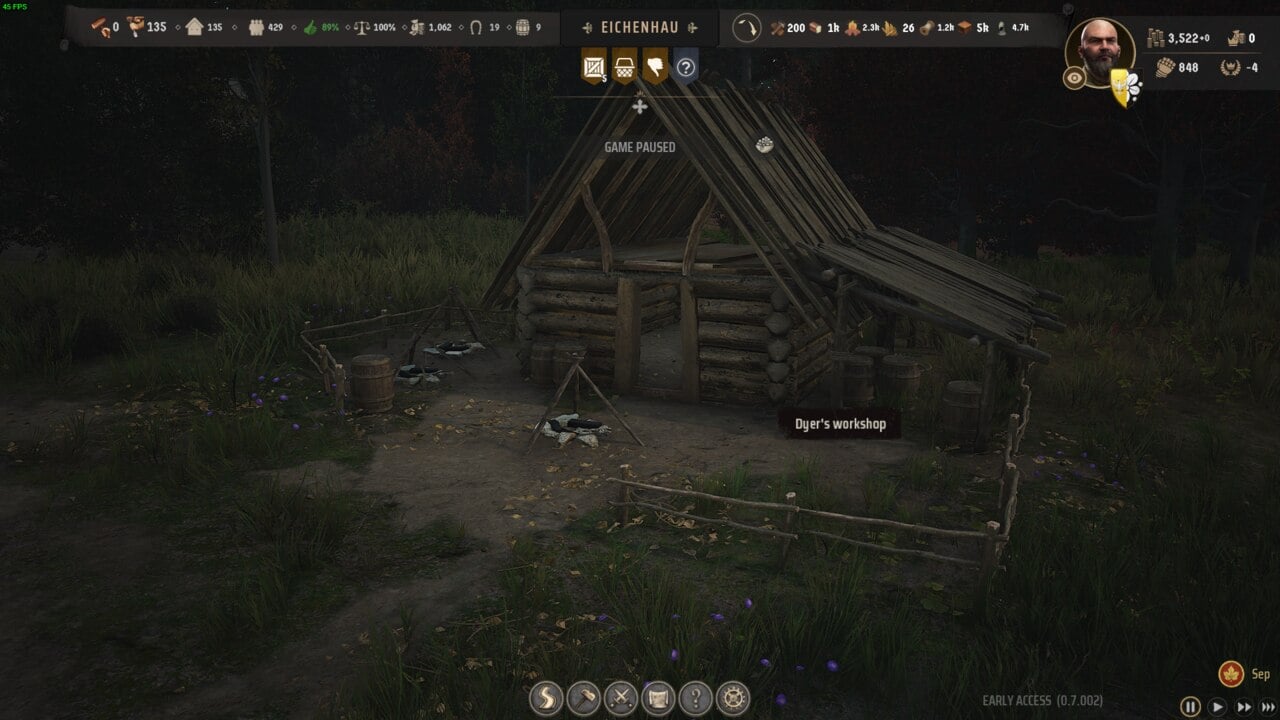
Dyer’s Workshop
- Settlement Level availability – Settler’s Camp
- Construction menu section – Industry
- Relocation – fixed
- Upgrades – none
The Dyer’s Workshop is the building that is used to convert Berries (gathered by a Forager Hut) into Dyes, which are then used to produce clothes and cloaks. Though a useful building, be wary of managing your stock of Berries as they are an important early game source of food. You’ll want to build the Dyer’s Workshop next to a Storehouse and Forager Hut for maximum efficiency.
Trade buildings
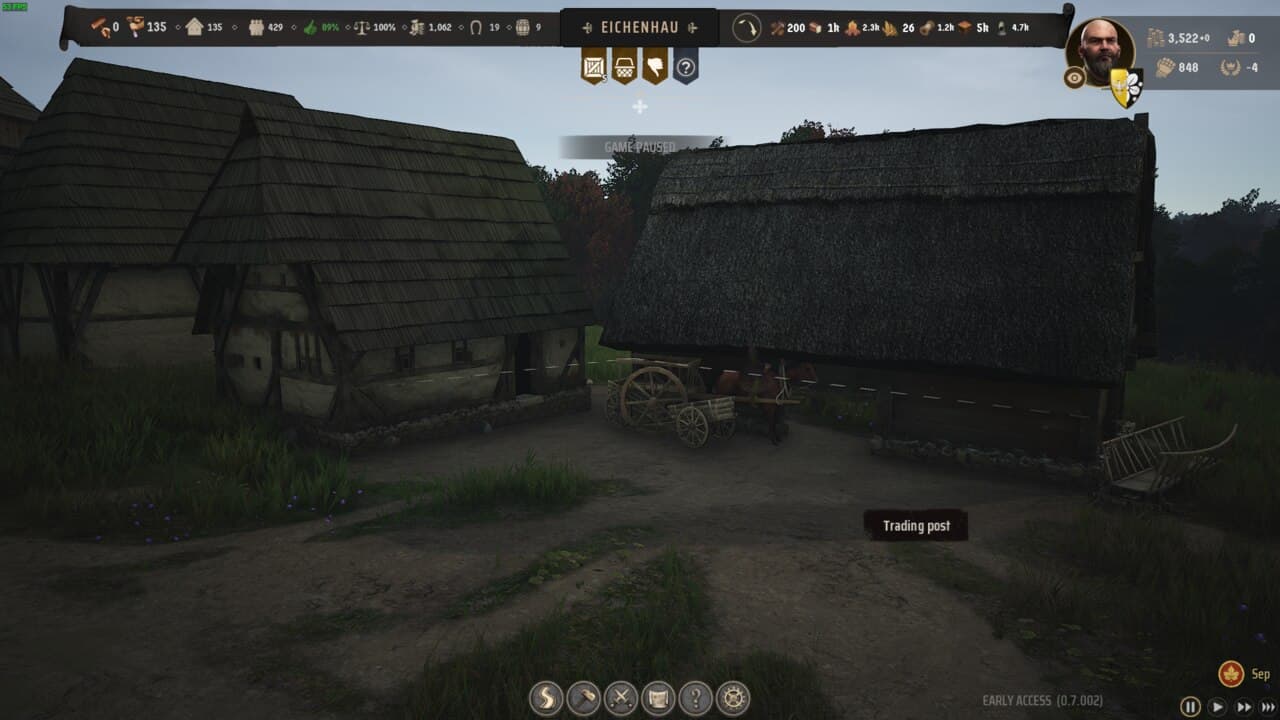
Trading Post
- Settlement Level availability – Settler’s Camp
- Construction menu section – Trade
- Relocation – fixed
- Upgrades – none
The Trading Post is required to enable trade in your region. Once built, merchants will visit the Trading Post to import and export various goods in exchange or for Regional Wealth. By clicking on Trade, you can see all the available trades, categorised as Minor Trades and Major Trades, the difference being that Major Trades require the establishment of dedicated trade route, which costs extra Regional Wealth.
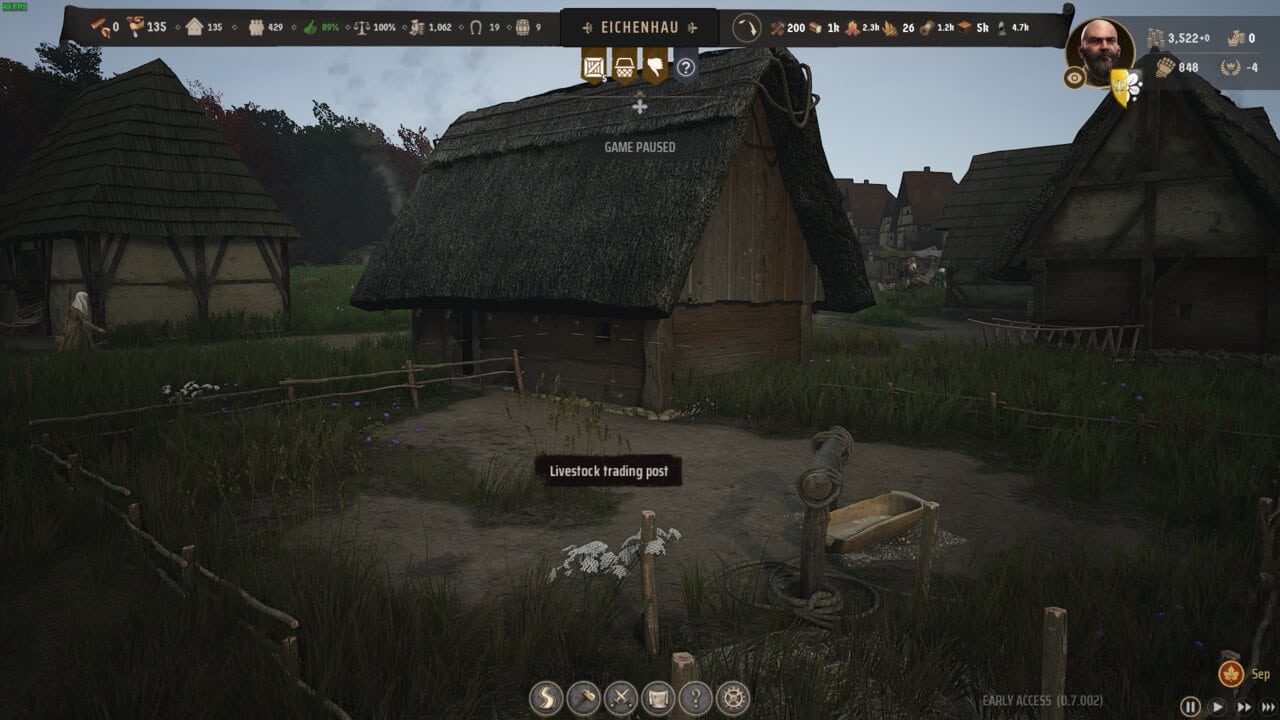
Livestock Trading Post
- Settlement Level availability – Settler’s Camp
- Construction menu section – Trade
- Relocation – fixed
- Upgrades – none
The Livestock Trading Post is used to import and export Livestock with neighbouring tradepoints and regions. If you build a Sheep Farm, you’ll need to import sheep via the Livestock Trading Post. It’s also used to buy Horses, Lambs, and Mules.
Administration buildings
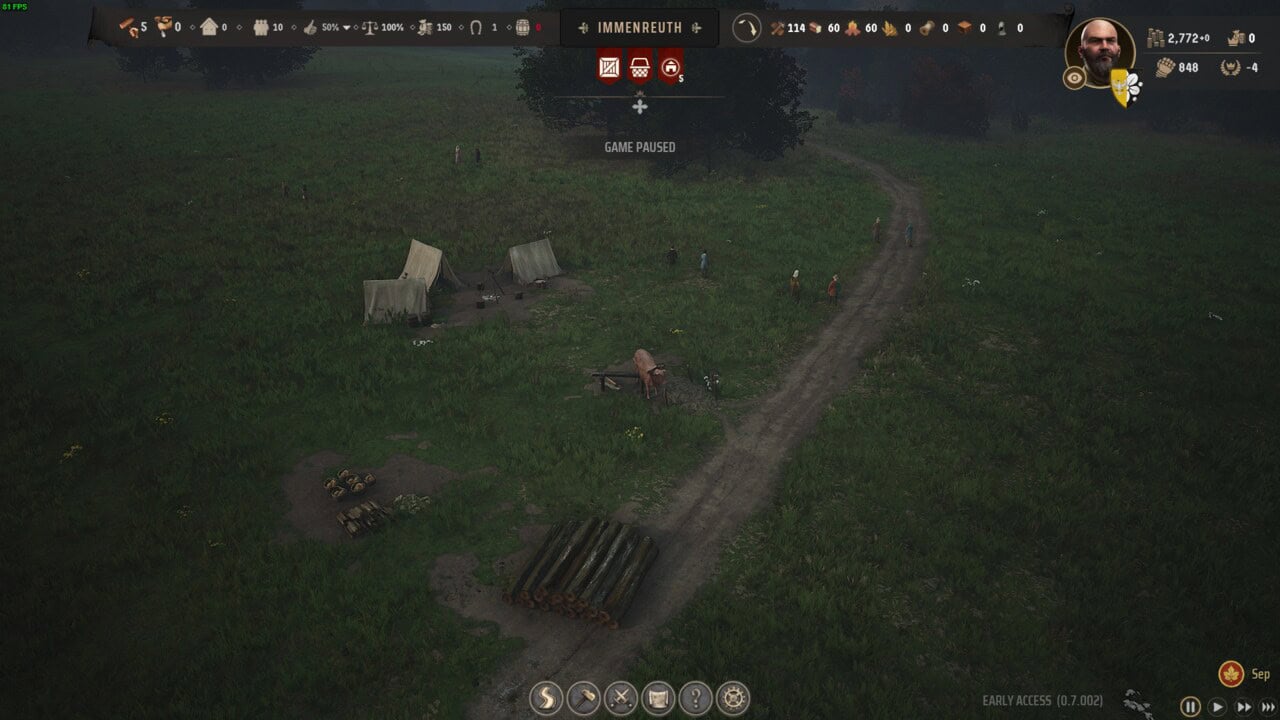
Settler’s Camp
- Settlement Level availability – Settler’s Camp
- Construction menu section – Administration
- Relocation – fixed
- Upgrades – none
The Settler’s Camp is the very same starting cluster of tents, supplies, five families, and Regional Wealth that you get at the start of each game. The building is used later on to start up new settlements in claimed regions.
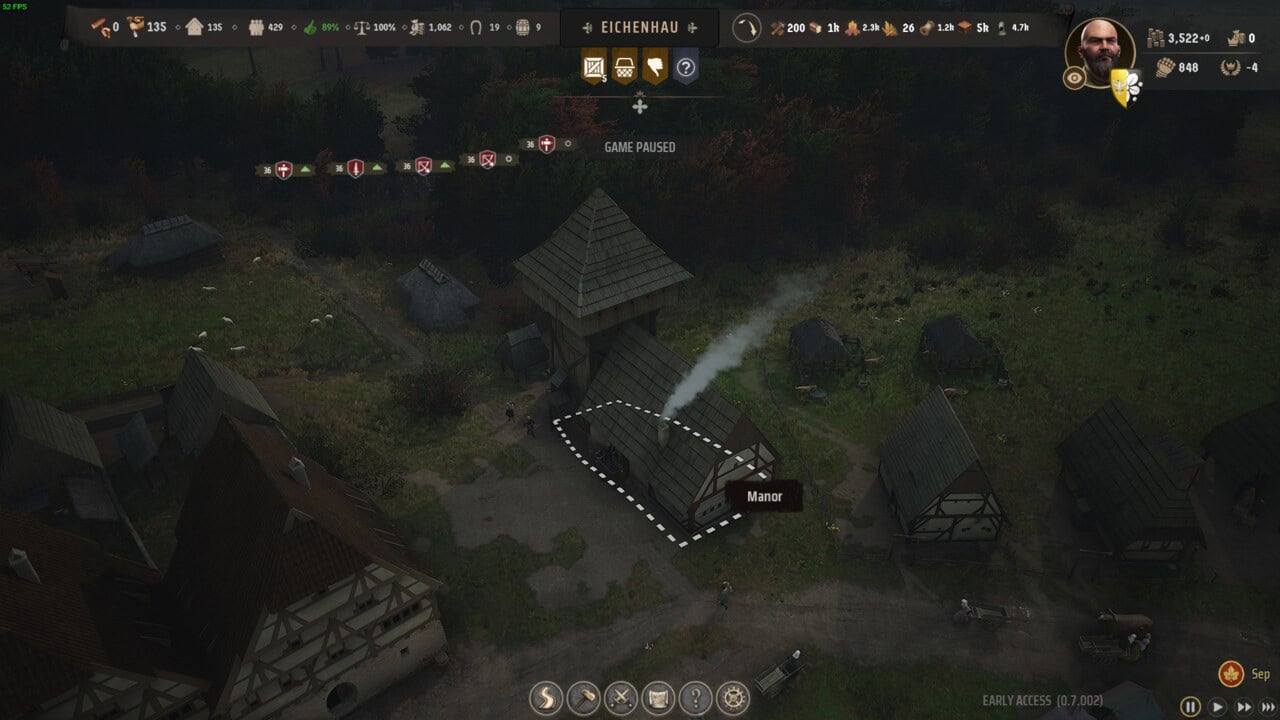
Manor
- Settlement Level availability – Small Village
- Construction menu section – Administration
- Relocation – fixed
- Upgrades – none
The Manor is your home in your settlement, the eponymous Manor from which you lord over your villagers. It’s also used to set taxation levels to accumulate Treasure and Influence. It also enables you to have a Retinue, an army unit loyal to you made up of lower nobles, family members, and other local people of import. Note that it’s the only one of all the buildings in Manor Lords that requires a Small Village Settlement Level to unlock.

